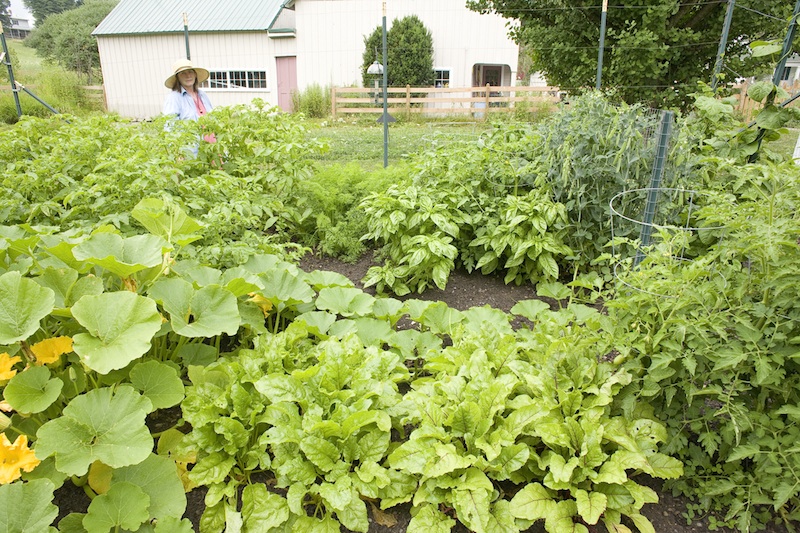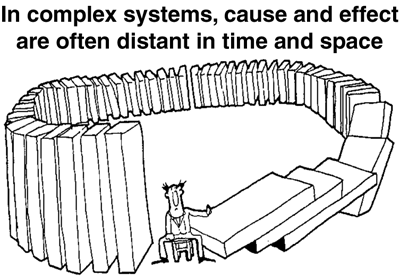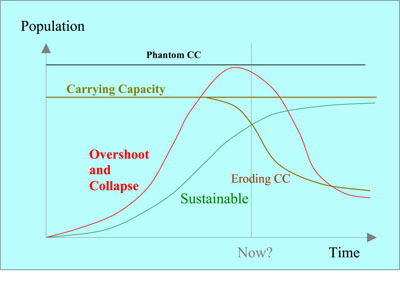Recently in food Category
By Karl North
The vulnerability of cities and suburbs in the post-petroleum era has been the object of much debate because their present organization makes their operation so energy-intensive. The debate heretofore has tended to swing between two extremes. One claims that these forms of social organization on the land are so unsustainable that their populations will be forced to abandon them gradually as the energy descent progresses.[1]
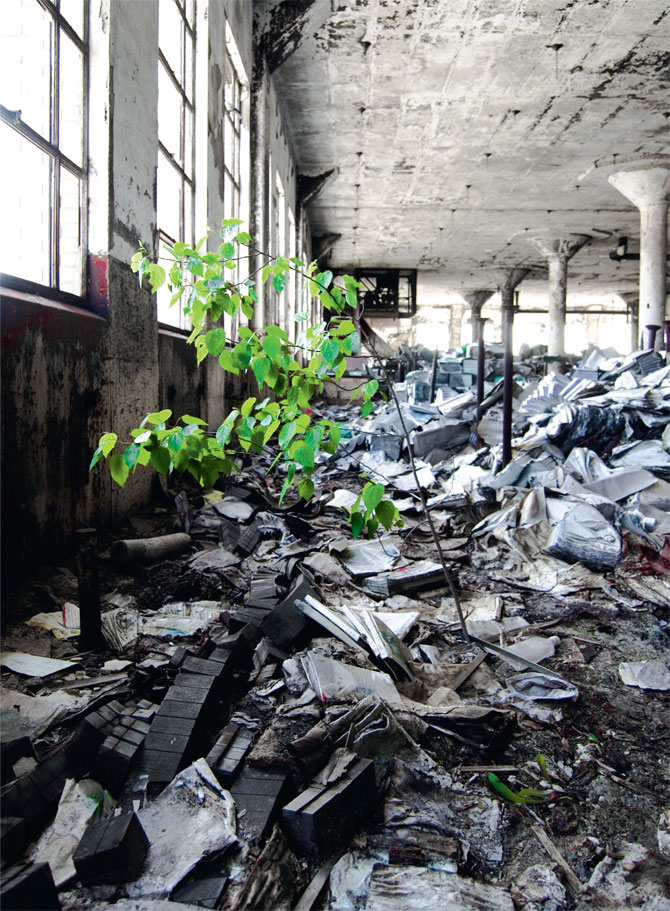
Figure 1. A tree grows in Detroit
(photo by James Griffioen, vice.com)
James Kunstler, a well-known critic of the kind of cities and suburbs that have emerged in recent decades, puts it bluntly:
The whole suburban project I think can be summarized pretty succinctly as the greatest misallocation of resources in the history of the world. America took all of its post-war wealth and invested it in a living arrangement that has no future.[2]
The other extreme entertains dreams of massive programs of public transportation to save suburbia. It also relies heavily on technologies like high-rise agriculture and on the efficiencies of population density to save cities. This is the vision of the eco-cities movement.
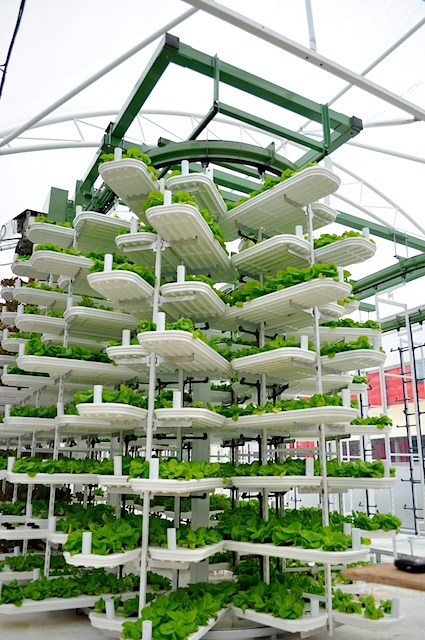
Figure 2. Techno-fantasy unchained
(Time magazine via City Farmer News)
Neither of these scenarios makes much sense. The abandonment thesis ignores the immense accumulated wealth of the built environment in metropolitan areas, which is not likely to be left to fall apart, but will more likely support a certain level of human population if salvaged for other uses than it was originally designed for.[3] It is conceivable that modern society will be reduced to energy inputs available in 1800, before much use of fossil fuels. But that would not mean a simple return to what life was like in those times, due in part to the bonanza of accessible raw materials that the present built environment represents (a good thing), and in part to two hundred years of accumulated damage to the planetary resource base (not so good) that was unimaginable in 1800.
On the other hand, the claim that technological improvement can keep cities and suburbs functioning in the current ways at current population levels fails for many reasons. First, it perpetuates the above-mentioned accumulation of damage to necessary ecosystemic functions, damage that is intrinsic to “technological improvements,” damage that is already causing exponential growth in the operating costs of metropoles. Then there are the two reasons that the technological savior argument always has failed: there is a limit to the efficiencies that can be delivered by technology, and every technological advance requires an increase in complexity in the socio-economic system, with a resulting increase in consumption of energy and other raw materials in an era of increasing resource scarcity.[4]
Moreover, as genres of social organization and human landscapes, modern cities and suburbs are among the most energy consumptive imaginable because their continued existence relies on a broader agro-industrial base. Most calculations of the energy budgets of metropolitan areas far underestimate because they fail to account for the energy embodied in their construction and maintenance, which includes the vast and often distant agricultural and industrial plant, transport, and communication systems necessary to keep them running. This diagram suggests the scope of the support system required just to keep a metropolitan population in food.
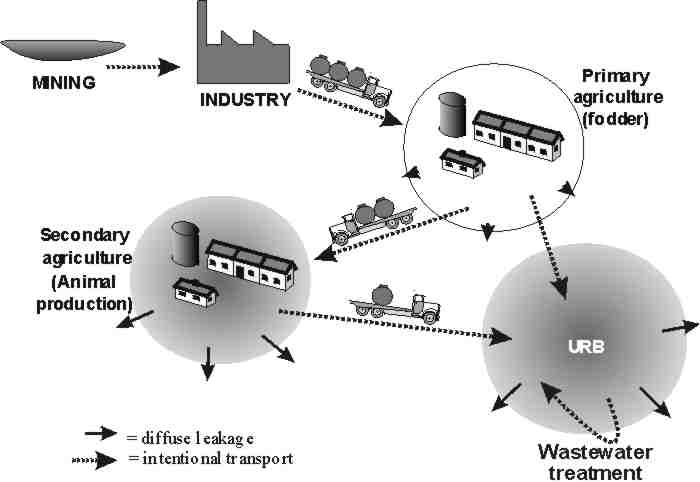
Figure 3. “The linear flow of minerals from mines to farms and then dense human settlements leads to depletion at one end and the concentration of wastes or dispersion into water at the other.” — Jason Bradford (http://www.theoildrum.com/node/5773), graphic by Folke Günther
Of course, cities have existed ever since the advent of agricultural systems capable of providing the surplus necessary for their growth. But after a period of expansion, often spanning centuries, they have usually destroyed enough of their resource base to cause them to decline. In the last two centuries, cities have grown markedly in size and consumption of resources. But this unprecedented level of urban expansion is entirely reliant on access to fossil energy and other nonrenewable resources that are now becoming permanently more scarce.
The main weakness of the eco-cities movement is its failure to squarely face the increasing scarcity in energy and other resources and seriously consider its implications in the energy descent. Green or new urbanists claim that cities like New York are sustainable because their population density allows a smaller per capita ecological footprint than suburbs.[5] The clustering of populations that the ecocities movement advocates does conserve energy in key areas like building heating and human transport. This clustering will be essential in the energy descent at every scale of human community if we hope to avoid not only the energy costs of most present building configurations and their reliance on a distance economy, but also their misuse of agriculturally valuable land.
But heating and human transport are only one part of the energy cost of operating cities. The green urbanist scenario that compares present cities favorably to present suburbs fails to consider the more comprehensive assessment of many energy descent analysts that no dominant configuration of land use and built environment in the US today, urban, suburban, or rural, is sustainable without fossil fuels. The embodied energy in cities in particular involves upstream energy and material flows along many long production chains, and it requires constant renewal due to entropy (depreciation). Hence embodied energy in cities is commonly three times as high as operational energies like heating and daily human transport.[6]
As a result, the eco-cities movement’s current urban redesigns are characteristically overly complex and overly expensive, and are therefore aimed, like much organically grown food and most present ecovillages, at a gentrified market that will not survive the energy descent. This is not meant to criticize these efforts, but simply to point out that they reflect the economic and cultural choices of a society that has enjoyed cheap energy.
In addition to narrow thinking about the massive inflows of energy and other natural resources that today sustain metropolitan areas, the ecocities movement rarely considers more fundamental questions about urban populations posed by energy descent. In a world where the energy from oil has permitted a tripling of the population and, in rich countries, an average per capita ecological footprint (a measure of resource consumption) so large that it could support 30 African peasants, what is the true carrying capacity? How is the disparity in footprint justified when it reduces the supportable global population? And what is the largest sustainable city when urban population densities are on the order of 67,000 people per square mile[7], and the transportation cost of provisioning such densities from ever-more-distant locations increases with city size beyond the declining energy capacity of the planet?
A More Likely Scenario
A third scenario that I will explore here as more likely than the two considered above envisions a major transformation of both urban and suburban land and resource use to make cities and suburbs habitable in the coming low energy era, although necessarily supporting a much lower population level than they do today. As in all ecosystems, the carrying capacity of these areas will contract to fit the available energy, which sooner or later will be mostly solar.
Carrying capacity (CC) is an essential concept for thinking in scenarios about a future in which access to key resources is declining. Carrying capacity is not just a population level. It is first the level of sustainable resource consumption (SRC) that a particular landscape or resource base can support, which in turn determines the mix of population level and per capita resource consumption or material standard of living. Thus the equation for sustainable resource consumption is
SRC = population × resource consumption per capitawhich makes clear that sustainable carrying capacity in terms of the actual number of people it will support depends on the level of individual consumption:
CC (sustainable population) = SRC ÷ resource consumption per capita
This understanding of carrying capacity raises a concern about present resource consumption. The modern industrial society that urban areas epitomize now relies 80-90% on nonrenewable resources. A society that must return to a resource use rate that rarely uses nonrenewables except as recycled salvage will need to rely mainly on low-input agriculture, aquaculture, and forestry for food and fiber, and similar low-input technologies using renewable and salvageable materials in other areas of production. Hence the inevitability of a return to a relatively low-technology solar energy economy is likely to reduce populations in large metropolitan areas to 10-20% of their current levels.[8] Dispersal from city centers to hinterlands will account for much of the decline. In the end this will be a salutary outcome because it will contribute manpower to the increasingly labor-intensive farming systems that will replace industrial agriculture.

Figure 4. (Pastel by Robert Huffstutter)
How will employment and therefore population shrink in metropolitan areas? The relative concentration of wealth in metropolitan areas has spawned an urban economy that depends heavily on discretionary spending beyond essentials. This part of the economy will tend to shrink first as the energy to support the modern economy becomes scarce.
Also, many people who live in cities and their suburban bedroom communities work in an economy that is parasitic: instead of creating value it simply transfers wealth from one group to another. Much employment in the so-called FIRE sector (finance, insurance, real estate) falls into this category, which also includes much government, advertising, litigation, and lobbying activity — economic sectors that have arisen to exploit our society’s failure to find better ways to perform essential functions. Jobs in this parasitic economy can be expected to disappear early in the energy descent. Many urban clerks in cubicles, data gathering to feed the wealth transfer game, will need to convert to skills that provide life’s basic necessities — food, shelter, basic tools, and services — and for many that will mean leaving the city for farms.
In reality, much of the present urban population will be needed on farms. According to energy descent scientist Richard Heinberg, the de-industrialized agriculture that replaces the current energy-intensive form of food production in the US will require fifty million farmers instead of the present two million.[9] Indeed, there is a growing new farmer movement across the US, served by organizations like Groundswell here in Tompkins County.
The challenge of envisioning a plausible conversion of metropolitan corridors like Bos-Wash to landscapes that are livable sans fossil fuel is to think beyond current models of development or even redevelopment schemes requiring levels of capital investment that a post-petroleum economy cannot afford. The expensive visions of both the green urbanist movement and the nodal cluster suburbanists run aground on this obstacle. Awareness comes slowly because thinking about the upkeep of these structures in the energy descent is often counterintuitive:
Cities overburdened with skyscrapers will soon discover that these structures are liabilities, not assets. The skyscrapers deemed most “innovative” by today’s standards — the ones most dependent on high-tech materials and complex internal systems — will be the greatest failures. This includes many of the new “green buildings.”[10]
An additional hurdle is the current resistance of the denizens of these landscapes to using them differently, but eventually that resistance will melt away as necessity becomes the mother of adaptation.
Throughout their history, metropolitan areas have been centers that have concentrated wealth and power drawn from exploited peripheries. Early in the energy descent they can be expected to use this accumulated advantage to allocate resources disproportionately to themselves and thereby prolong consumption levels and material living standards even as they decline in society as a whole. The maintenance of centralized control that this requires may hinge on something as simple as the ability of security forces, police and military, to fuel their operations on renewables like biodiesel.
Later in the energy descent, however, much of the fuel-intensive economic activity and centralized, hierarchical organization that is the raison d’être of cities and their umbilically connected suburbs will become unaffordable, and the related employment and population will evaporate. The long term budgetary agony of central governing administrations, now well under way, is an early indicator of economic contraction to come. Then human activity will return to a focus on the basic necessities of food and shelter, and economies in these places as elsewhere will self-reorganize around the provision of farming, food systems, and housing that work with minimal fossil fuel. My aim here is to summarize how I think this is likely to happen. The key element in my scenario is the liberation of the built environment and its rearrangement for other uses, a change made possible by the contracting economy and population of metropolitan areas that I have described as inevitable over time in the energy descent. Finally, I will suggest how this scenario might play out in Ithaca, New York and its hinterland, and by extension, in other small cities and towns.
The Post-Petroleum Metropole
Cities located on waterways will remain centers of some distant trade as they have for centuries. On the downside, rising water levels could eventually reduce habitable areas in seaport cities. But for a while as cities and suburbs shrink and depopulate, urban activity will center on salvage of the built environment. As many parts of the built environment are abandoned, we can expect their materials and land to be reclaimed for structures and spaces for growing food and for makeovers of housing and other structures to the level of energy efficiency required by the new economy. Because the return to a solar energy economy will support only a limited population, most land and buildings will stand empty and provide a broad inventory of materials or, once cleared, space for gardens. It is hard to imagine conversion of places like the canyons of south Manhattan to either appropriate housing or food production, so some city zones may remain abandoned except for salvage activities. At the end of Apartheid in South Africa, for example, white businesses left the high-rise section of Johannesburg. The squatters who replaced them could not afford the energy needed to maintain the buildings, and they gradually fell apart.[11] As urban areas everywhere experience a similar drop in energy use, urbanites will abandon energy-intensive structures. Hence a degree of decentralization will occur as urban areas devolve into compact, semi-self-sufficient neighborhood communities separated by empty salvage-yard commons.
The same process will occur in the suburbs, where abandoned residential and commercial structures will serve as stores of materials for low-cost conversion of residential housing for the remaining population. Land to farm will be plentiful, but a main problem will be to end the inefficiencies of suburban sprawl and reconfigure this landscape into the kind of demographically dense agrarian villages that have proved sustainable for centuries. The affordable solution will be to move salvaged building materials or whole abandoned structures into clusters at these central locations. This will recreate at low energy cost the nodal demographic topography that historically has been chosen as the most efficient mode of spatial organization of rural communities the world over.[12] Thus in the long reach of history the extravagance we call suburbia will prove to be a temporary phenomenon.
Once the suburban topography is reformed into economically efficient agrarian communities, some of these villages have the potential to create a thriving trade in surplus food production with the nearest city nodes, which in turn have a surplus of salvage inventory for which they can exchange materials, and products handcrafted from them, and exchange seasonal labor as well. In other words, city and suburb will convert to symbiotic economies that bear some similarity to what they were before the oil age. In the New York metropolitan area, for example, New Jersey (the Garden State!), Long Island, coastal Connecticut, and the Hudson Valley — the city’s former breadbaskets — will regain that function. As the distance economy that cities once depended on becomes too costly, the ability of the near suburbs to convert from bedroom communities to beehives of food production may well determine the size of the population that can remain in the city.
Solarized Housing
In cool climates like the Northeast US, people will be forced to rebuild housing to maximize solar heat and minimize biomass burning, as biomass will regain its traditional role as the key strategic resource and will experience renewed demand for many uses. Here again the expensive models of residential energy efficiency popular today in the green building movement are impediments to visioning. For most of the population the only conversion option will be to use scavenged materials and hand labor, both of which will be plentiful, and in fact all that is necessary to build highly effective passive solar systems for heating both living spaces and water.
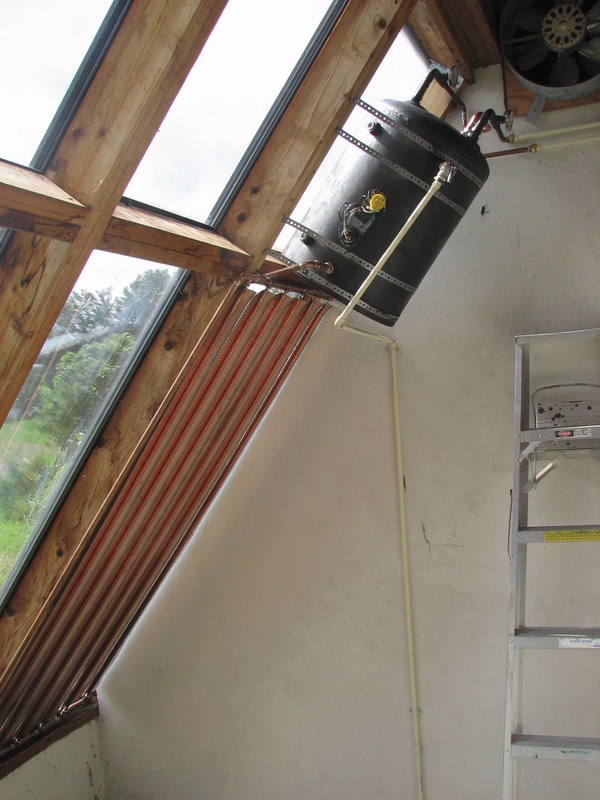
Figure 5. Solar hot water in attached solar greenhouse
To solarize a residence or other building that needs to be heated for all-season use, urbanites will raze city structures that block it from full southern exposure and will use their insulation, glass, masonry, and plumbing hardware to convert it to reliance mostly on the sun for heat and hot water. Widespread conversion will occur when the massive city and suburban built environment inventory becomes available for salvage, because this type of solarization requires no expensive technology or skills beyond elementary carpentry and plumbing. Enough business buildings to support the shrunken economy will be converted in the same way. Gradually buildings made of wood, with their short turnover time of a few decades, will give way to more durable masonry salvaged from unusable structures. The masonry will perform the added function of furnishing the thermal mass to store solar energy required by passive solar heating systems.
Food Production Systems
Like most current alternative architectural models, most organic agriculture grew in the age of cheap oil and takes for granted many of its luxuries. Food production everywhere will eventually adapt much more closely to farming in nature’s image. Like natural ecosystems, farms will have to be largely self-sufficient in inputs, including a lot of human and animal labor and relatively simple machines and tools.
City food production will reach limits, making city populations dependent on the development of farming in the hinterlands that had been suburbs. Once most empty urban spaces are used for farming, space will be a limiting factor on urban growing because demolition and removal of buildings in the energy descent will be very labor intensive. Another limiting factor will be lack of space to “grow” fertility either as green manure or manure from pastured livestock. This need for fertilizer could motivate a return to transport within the metropole using animals fed from fields outside cities, animals like those whose manure supported urban food production until well into the industrial era. In many metropolitan locations, efficient steel-on-steel rail transportation systems work as well with animal power as with energy derived from fossil fuels, just as they did for decades before and after the turn of the twentieth century. An effective policy would prioritize remaining fossil energy for the reconstruction of the rails and the rolling stock and run the latter on animal power.
A distinct advantage of farming in cities and suburbs will be the many existing structures that can be converted to solar greenhouses to furnish the heat to perform and enhance essential services in the new food system: intensive all-season growing, vermicomposting, food conservation by solar drying, and even solar cooking. Husbandry of small livestock like poultry and rabbits also will benefit from solar greenhousing. Like the solarized human housing described above, these structures will be low-cost conversions that require little skill beyond an understanding of passive solar concepts.
Implications for Tompkins County
Whatever its previous form of habitation and land use — city, suburb or rural — the most effective form of reorganization of communities everywhere will be small, dense, and mixed-use, to make the most of the traditional advantages of a convergence of many hands with diverse talents in a world made more by hand and constrained mostly to local self-reliance.
However, the size of an urban agglomeration will affect how easily the scenario that I have described will occur. Bamako, in 1962 a city of 100,000 in the heart of West Africa, seemed to manage well on relatively little fossil energy, as most of its population still cast a small carbon footprint. But Havana, with a population ten times that of Bamako, was suffering visibly despite massive compensatory government programs when I observed it during visits in the 1990s, six years into its peak oil experience (Cuba endured an 80% decline in energy and related inputs).
The larger the metropolitan area, the more population shrinkage it is likely to experience, and the greater the tendency for the city proper, like the suburbs, to break up and reorganize into compact, walkable, semi-self-sufficient communities. Cities as small as Ithaca will undergo much of the repurposing of land use and built environment described above, but the changes will be less extreme. Most of the downtown area is already walkable, and a low-input public transportation system is conceivable that would link neighborhood clusters to each other and to a rural periphery that is relatively nearby.
Like many cities on waterways, Ithaca will benefit from a potential lakeside trading area that low-input water transportation offers. The lake provides a link to a large swath of farmland that might support more of the current urban and suburban population in Ithaca than in landlocked cities. Hence waterfronts in the city and county will regain importance as points of departure in a revived system of waterborne commerce. In an era of scarce, depleted resources, this waterfront renaissance will need to occur mostly with salvaged or renewable materials.
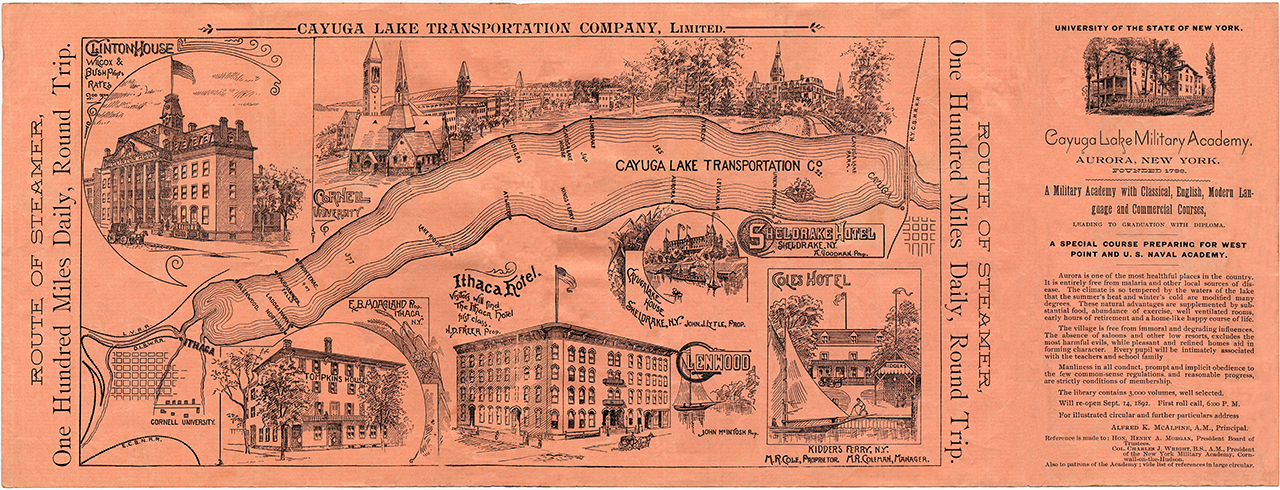
Figure 6. An advertisement for the Cayuga Lake Transportation Company, ca. 1892. The steamer served the same communities around Cayuga Lake that are served by state routes 34, 34B, 90, and 89 today. A high-resolution version of this figure can be downloaded from http://freepages.genealogy.rootsweb.ancestry.com/~springport/pictures75/7548cleaned2sharp.jpg (use “Save link as” to download before attempting to view)
The emergence of dense agrarian feeder hamlets along transportation lines mentioned in my Visioning County Food Production series[13] is more likely to proceed as I have argued here, by salvage of the existing built environment, than by expensive new development as in the present ecovillage model. However, the reorganization of the Tompkins County food production system, food economy, and resultant urban and suburban land use that I explored in that series is more conceivable in its urban and suburban population of 100,000 than in a larger metropolitan area, again for reasons that I have discussed here.
Conclusion
There is a fourth scenario for the nation’s metropoles that temporarily could partially avert the one I have described as most likely. Governments could proclaim a “wartime economy” and create a program of economic policies that redirects remaining fossil fuels and other nonrenewables to uses that adapt urban areas to a low energy future. If governments were to make appropriate major changes in economic priorities, for a while they could maintain urban populations and support levels of urban activity and consumption that are higher than what I have described. Perhaps Departments of Descent would emerge and begin setting economic policy, at least locally.
This would amount to converting the “free-market” economy to a mixed command economy, which while common in many countries, generations here in the US have been taught to regard as evil. However, our sophisticated “public relations” industry has surmounted greater challenges in manipulating the collective consciousness, and may well show itself equal to the task of achieving a flip-flop in public thinking. Whatever the success of a period of legislated economic planning, its main positive function would be to delay the inevitable return to a solar energy economy long enough to help society prepare and adapt.
The present degree of external private control of local economies is backed by government policy at all levels and is a major obstacle to adaptation to the needs of the energy descent. Therefore, an even better scenario that goes beyond emergency economic planning at a national level might be a national program to gradually devolve centralized economic control over the production of necessities to local communities, which would even give them the potential to experience economic democracy if they are so inclined.
But these scenarios might be too much to expect from the vested interests that control much of state and federal policy making. Hence my thinking about scenarios here has taken the route of cautiousness; it assumes that because the notion of public planning of economic resource use in the public interest at any level of government has become alien to US cultural values, it is more likely that cities and suburbs will be left to self-reorganize more or less chaotically into forms that can support some level of human habitation in the energy descent.
Because of all the contingencies to consider, I believe it impossible to estimate with a useful degree of probability the pace at which the scenario that I have described will come to pass. At present, for example, debt at all levels of social organization is being used to put off the inevitable, although it will only make a later transition more difficult. However, the gradual failure of the energy-intensive metropolitan way of life is already making itself felt in declining living standards for the great majority who are caught up in it. Insolvency is increasing in municipalities, forcing them to start filing for bankruptcy. Sooner or later in coming years and decades, most of us will be forced to organize our lives differently. This attempt to picture the consequences of declining energy for urban and suburban areas hopefully will facilitate that transition.
Notes
[1] Kunstler, James Howard. The Geography of Nowhere: The Rise and Decline of America’s Manmade Landscape. Simon & Schuster, 1994.
[2] Kunstler, James Howard in The End of Suburbia, 2004. http://www.youtube.com/watch?v=Q3uvzcY2Xug
[3] Vail, Jeff. “Resilient Suburbia,” 2010. http://www.jeffvail.net/2010/01/resilient-suburbia-toc.html
[4] Tainter, Joseph. The Collapse of Complex Societies. Cambridge University Press, 1988.
[5] Owen, David. Green Metropolis: Why Living Smaller, Living Closer, and Driving Less Are the Keys to Sustainability. Riverhead Books, 2009.
[6] Fridley, David. “Embodied Energy: An Alternative Approach to Understanding Urban Energy Use.” The Oil Drum, August 12, 2010. http://www.theoildrum.com/node/6842
[7] Owen, David. Op. cit.
[8] Odum, Howard T. and Elizabeth C. Odum. A Prosperous Way Down: Principles and Policies (University Press of Colorado, 2001), p. 174. Written by pioneers in the application of systems ecology and energetics to problems of society.
[9] Heinberg, Richard. “Fifty Million Farmers.” Energy Bulletin, November 17, 2006. http://www.energybulletin.net/node/22584
[10] Kunstler, James Howard. “Back to the Future: A roadmap for tomorrow’s cities.” Orion, July/August 2011.
[11] Kunstler, James Howard. Too Much Magic: Wishful Thinking, Technology, and the Fate of the Nation. Atlantic Monthly Press, 2012.
[12] Vail, Jeff. “Envisioning a Hamlet Economy: Topology of Sustainability and Fulfilled Ontogeny,” 2009. http://www.jeffvail.net/2006/04/envisioning-hamlet-economy-topology-of.html
[13] The series was published here in six parts:
http://tclocal.org/2009/07/visioning_county_food_producti.html
http://tclocal.org/2009/09/visioning_county_food_2.html
http://tclocal.org/2010/02/visioning_county_food_prod_3.html
http://tclocal.org/2010/05/visioning_county_food_prod_4.html
http://tclocal.org/2010/06/visioning-county-food-prod-5.html
http://tclocal.org/2010/07/visioning_county_food_prod_6.html
By Simon St.Laurent
One of the most common complaints about the industrial age is its constant and seemingly ever-growing use of sweeteners. Whether it was cheap sugar (and rum) in the early 1800s, saccharin in the early 1900s, or high-fructose corn syrup in the late 20th century, sweeteners have had a bad—but tasty—reputation.
In a local context, however, sweeteners are extremely important. Many of the local fruits that contain Vitamin C, for instance, are difficult eating unless sweetened. Aronia Melanocarpa is called "chokeberry" for a reason. Black currants are difficult eating off the bush. The more familiar perennial rhubarb also becomes far more enjoyable with sweetening. Even in less extreme cases, sweeteners can certainly add enjoyment to foods otherwise too bitter or too bland to be attractive. Sugar is also very important in preserving food, where it creates a hostile environment for bacteria as well as a delicious treat.
Many different sweeteners are available today, though they may become more or less important in localization or energy descent situations. Some require industrial facilities and major energy inputs, and a few are dangerous, but many familiar sweeteners will likely remain available into even an uncertain future.
Sugar and Molasses
Sugar cane, a tropical plant, doesn't grow in Central New York. United States sugar producers are in Louisiana and Florida, though sugar refineries have been prominent features of port cities along the coasts. Modern sugar production relies on energy-intensive industrial processing and distribution. Cane sugar's long history, however, suggests that it and its by-product molasses can still be valuable with reduced processing, as extracting sugar is relatively simple and can be fueled with the cane that created it[1]. Sugar distribution and storage are similarly simple, as it is easily packed for safe storage.
Sugar produced from beets has many of the same issues as cane sugar, but unlike sugar cane, sugar beets can be grown in New York State. However, the quantity of sugar beets currently grown is small enough that the USDA National Agricultural Statistics Service[2] doesn't even offer sugar beets as a query option for New York. Today, sugar beets receive more industrial processing than does sugar cane, despite containing 17% sugar while cane contains 10%. Unlike cane, beets cannot easily be processed using their byproducts for fuel. (The byproducts are typically used as animal feed.) Sugar beets are also typically used as a crop in rotation, so the yield per acre is substantially lower than that of cane.[3] Sugar beets can be processed at home on a small scale by chopping, boiling, and evaporating, however.[4]
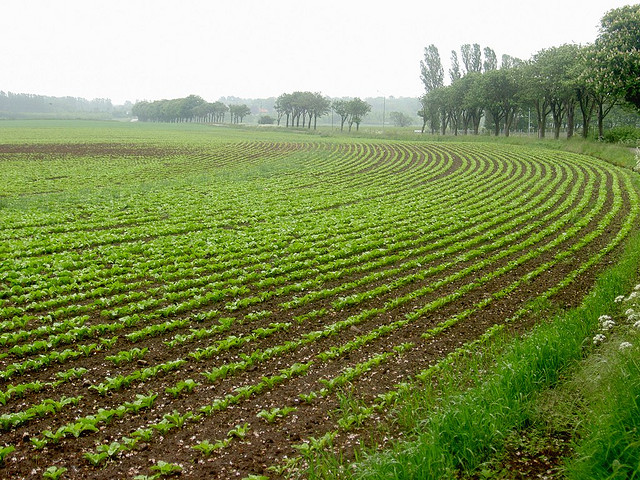
Figure 1. Sugar beet field, Sweden (original source, used under Creative Commons license from Dag Endresen.)
The primary questions about sugar in an energy descent situation revolve around price, distribution, and quality.
Though sugar in the United States is expensive relative to sugar in the rest of the world (roughly double the Canadian price because of American import quotas[5]) it remains a remarkably cheap commodity by historical measures. As the energy costs of sugar refining climb, those prices will likely climb. Diversion of sugarcane to ethanol production may also shrink the available supply of sugar substantially, also increasing the price.
If energy costs climb, the cost of distributing sugar, especially cane sugar coming from a distance, will climb. Sugar works well with slower and less energy-demanding forms of transport, but transitions to new distribution patterns may take time. Disruptions may also be more difficult because of the longer supply chain of cane sugar.
While less-refined sugar has become a high-end product recently, most people still expect their sugar to be a pure white with a relatively neutral taste and predictable cooking behavior. If the extra energy cost of refining to white sugar climbs, more people may need to get used to less-refined sugar.
It may be possible to create a substantial sugar beet industry in New York State—or it may make sense to count on sugar's relatively easy tradability to keep it available.
Corn sweeteners
Corn-based sweeteners thrive today because of a combination of the import quotas noted above and subsidies for corn production. Dent corn is converted into corn starch by a wet millling process and then treated with enzymes to produce corn (glucose) syrup. High-Fructose Corn Syrup (HFCS) is made by an additional enzyme process to convert much of that glucose to fructose.[6] This is a strictly industrial energy intensive process:
Corn wet milling is the most energy intensive industry within the food and kindred products group, using 15% of the energy in the entire food industry. After corn, energy is the second largest operating cost for corn wet millers in the United States. A typical corn wet milling plant in the United States spends approximately $20 to $30 million per year on energy.[7, page 3]
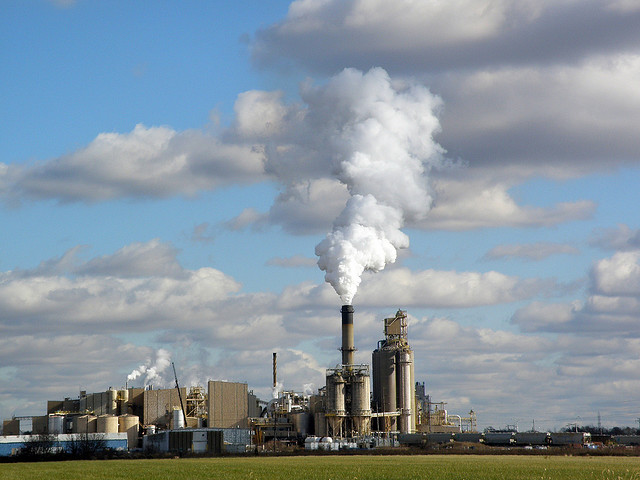
Figure 2. Wet corn mill (original source, used under Creative Commons license from Jim Hammer.)
While dent corn can be grown locally, the industrial scale and energy requirements of wet corn milling seem to put local corn syrup out of reach. There was a corn wet mill in Montezuma, New York, just up Cayuga Lake, but it closed in 1986.[7, page 73] Like sugar, corn syrup can be easily transported and stored.
Artificial sweeteners
If you count the extremely toxic "Sugar of Lead" (lead acetate), artificial sweeteners have been around for thousands of years, though the modern history usually begins with saccharin in 1879. While it is likely possible to create most of these sweeteners in the laboratory facilities available at Cornell, most of them are produced today in large volume at chemical plants.
As many artificial sweeteners (notably neotame, aspartame, saccharin, and sucralose) are sweeter by volume than sugar, and store reasonably well, they may be easier trade goods than sugar itself. Xylitol, mannitol, and sorbitol, the sweet alcohols, are roughly as sweet as sugar and are useful both to sweeten food for diabetics and potentially as a tooth decay preventative.
Lead acetate deserves special attention as a danger, as it is not difficult to synthesize from lead and has commonly been used as an adulterant in foods and drinks.
Honey
Honey is a commonly available sweetener that can be produced in large quantities in the Finger Lakes region. Beekeepers encourage hives to produce more honey than they need to survive the winter, then take the extra honey for human consumption.
Beekeeping is a complex art, though it scales down to the household level more easily than the production of many other sweeteners. Keeping hives alive has become more difficult in recent years with the spread of pests, notably varroa mites, but the infrastructure and learning investments required to become a successful beekeeper are still fairly small.
Until the mid-19th century, beekeepers used hollow logs or straw houses, called skeps, for their bees. While these worked, they didn't allow beekeepers to inspect the hive for disease, and the hive usually had to be destroyed to retrieve the honey. Because of disease issues, skeps are illegal in the US.
Most beekeepers use Langstroth hives, rectangular boxes filled with frames in which the bees make their home. So long as beekeepers maintain precise distances between equipment inside of the hive, the bees will avoid gluing everything together. This flexibility makes it simpler for beekeepers to inspect the hive, as well as to add and remove equipment to gather honey. Langstroth equipment does require a fairly substantial investment, and most beekeepers buy sturdy frames filled with wax or plastic foundation printed in a hex pattern. This gives bees a bit of a head start, and reinforcements in that foundation make it much easier to extract honey by spinning the frames mechanically.
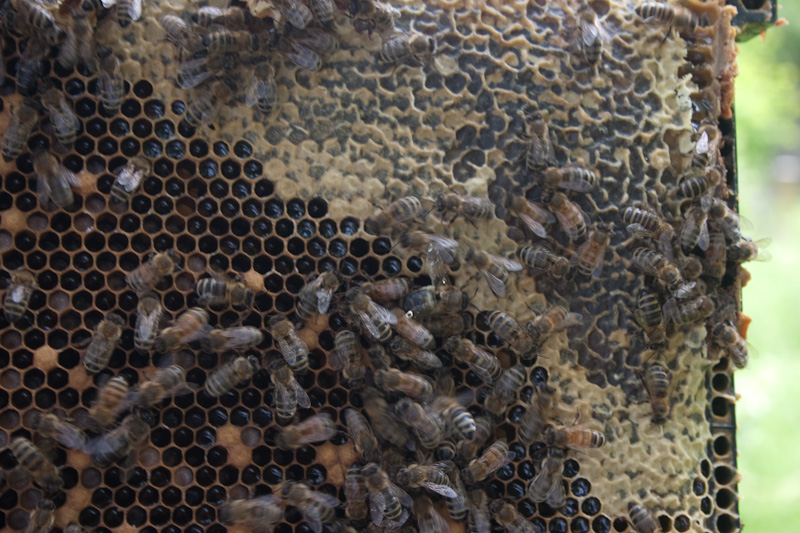
Figure 3. Bees on framed comb, honey top right, brood lower left. (Photo Simon St.Laurent.)
It is possible, though slow, to replace frames with bars with a simpler strip of wax on the bottom and have the bees build their comb on that, but the frames will be less regular and more difficult to use with an extractor. Taking that idea further, some beekeepers are using top bar hives. These hives fit into a single box organized horizontally rather than stacked vertically. The bees build their own comb, and beekeepers who want to collect the honey press or cut the comb instead of spinning it. This destroys the comb, requiring the bees to work harder to make new honey, but requires less dedicated equipment.
While much beekeeping equipment can be built from readily available wood and metal, two pieces of the beekeeping system are more difficult. The foundation is generally manufactured, though it can be created on a smaller scale using old equipment like some of that on display in the Dyce Lab at Cornell. The harder challenge is the supply of bees and queens. New bees and queens can be raised in the north, but at present most nurseries for bees are considerably farther south and rely on express delivery services. Local breeding has become more popular as a way to improve bees, so this may not remain an issue for very long.
Beekeepers are facing an ever-wider variety of diseases and parasites. While Colony Collapse Disorder (CCD) made headlines, most beekeepers are battling a variety of problems, most notably varroa mites. Chemical solutions can keep mites at bay, but mites seem likely to be a permanent feature of beekeeping at this point. Integrated Pest Management (IPM) mixes chemical and other approaches, focusing on keeping hives going. Inspection, now an optional event in New York State, may become especially important again if beekeepers have to rely on their own production of bees rather than importing new ones from the south.
While some beekeepers might find warmer weather convenient, changing weather patterns, especially if extreme weather becomes more common, could create difficulties. Rain and snow can keep bees in their hives and prevent their collecting food, while drought can delay or hinder plants from flowering. Bees also fly much less when temperatures are 90° F or higher, staying home to cool the hive. Bears moving north present another challenge.
Maple Syrup and Maple Sugar
Upstate New York has been producing maple syrup and maple sugar for centuries. Native Americans taught European settlers about collecting and concentrating sap, and Europeans gradually technologized and standardized the process. It was a key part of the development plan for early Cooperstown, though visions of maple fortunes faded quickly[8], and the energy and infrastructure challenges of making maple syrup have kept it from competing with cane or beet sugar. (Beet syrup starts at a concentration of 6 parts water to 1 part sugar, cane syrup starts at 10:1, and maple sap is at 40:1.)
While many modern maple syrup producers use plastic tubing to collect the sap, simple metal taps and buckets can provide a sustainable (if labor-intensive) collection system. Even a simple pot can work for boiling down sap, though large flat pans and especially more complex flue pans make it much easier to evaporate sap down to syrup. An indoor wood stove already used for heat can boil syrup at the household level, while a sugarhouse with vents is likely a better idea for a larger pan. A sugarhouse will need a dedicated supply of wood (or other fuel), but that is frequently available in the same areas as maple stands.[9]
While sugar maples (Acer saccharum) are the traditional tree for maple syrup production, red, black, and some silver maples can also be tapped, as can box elders and birches.
At any scale, however, maple faces some challenges. The flow of sap depends on the weather, particularly on the contrast between daytime and night time temperatures. Sap flows during the day, carrying sugar from the roots. A winter that turns too suddenly into spring can disrupt maple production, as can seasonal storms that make it difficult to collect and evaporate syrup. The short season and its unreliability make maple syrup a risky product. While it is not difficult to preserve maple syrup, its greater water content makes it more likely to spoil than honey or sugar. (Maple syrup can be made into maple sugar, at a large energy cost in additional refining.)
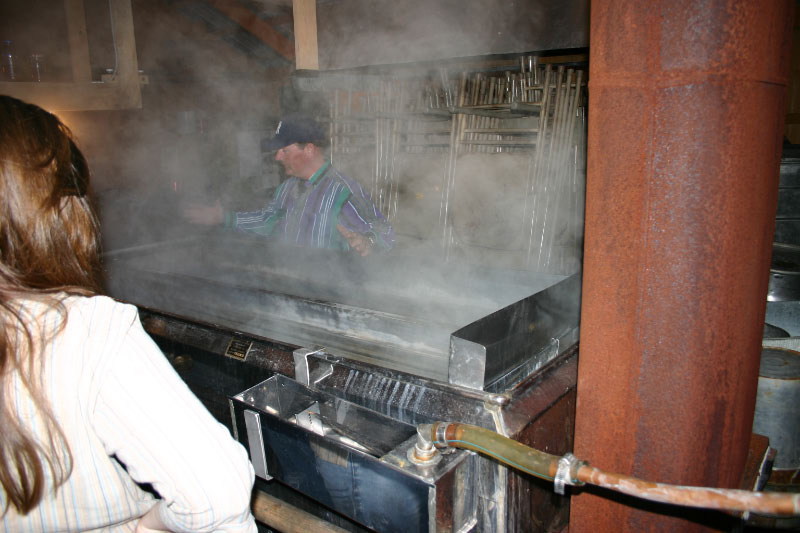
Figure 4. Evaporating syrup in Marathon, NY (photo Simon St.Laurent)
Maples also face environmental challenges. Climate change may shift the range northward, giving hickories and oaks an advantage while limiting maples. Long-term changes in spring weather patterns could also complicate or reduce the maple season further. The Asian Long-Horned Beetle, already present in New York City, attacks and weakens maple trees and a variety of other species. Larvae tunnel through the wood, weakening the tree.[10] These beetles may reduce the number of healthy maples and make it more difficult for new maples to survive.
Sorghum
Sweet sorghum, though traditionally grown further south, can produce a syrup similar to molasses, as well as silage or forage for animals. Some farmers are experimenting with it in Tompkins County as a cover crop and animal feed today, and it may be an appealing option if climate change extends the growing season.
Processing sorghum for syrup requires stripping the leaves and seed head off the cane, then squeezing the juice out of it and evaporating and skimming that juice. Crushing the cane is generally done with a simple mill, and the resulting juice yields about a gallon of syrup from ten gallons of juice.[11]

Figure 5. Sorghum mill (original source, used under Creative Commons license from g-s-h.)
Fruit Juices
Fruit juices and concentrates, and even applesauce, are classic sweeteners. While whole fruits are, of course, a delicious way to enjoy fruits, juicing and similar processes make it much easier for people to consume fruits that are bruised, damaged, or simply useful as a background sweetener rather than as the primary flavor. Commonly available apple and grape juices, both products of Upstate New York, are regularly used to provide bulk and sweetness to more expensive juices like cranberries, blackberries, blueberries, or (more recently) pomegranate.
Like fruits, fruit juices can be canned or frozen. They require more energy input to preserve than do sugar or honey, but are easier to create with ordinary pots or pans or with simple tools like steam juicers. They scale up to greater volumes easily as well.
Malt
Grains are another common source of sweetness. Malting grain is a fairly complex process involving drying, storing, adding water, partially germinating, and then processing and often mashing. Today most malting relies on industrial equipment and purpose-built malting floors, but the basic steps can be done with simple equipment on a wide variety of scales.
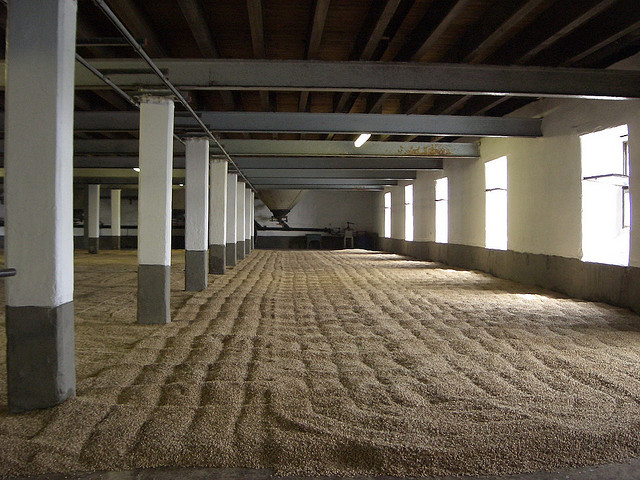
Figure 6. Malting floor (original source, used under Creative Commons license from Chris Sharp)
Malt is most commonly used as a fermentation base for beer and whiskey, but it is also a key component in malted milks, malt vinegar, and malt candies. Barley is the most common grain used for malting. Many grains are bred specifically to provide the enzymes needed for the malting process.
Stevia
Stevia is a relative newcomer, at least in the United States. The plant Stevia rebaudiana, originally from South America, has leaves that are approximately 30 times sweeter than sugar, and its core sweetening compounds are approximately 250 times sweeter. The Food and Drug Adminstration has allowed the sale of stevia as a food supplement but not as an ingredient, though stevia-derived sweeteners are now legal for use.
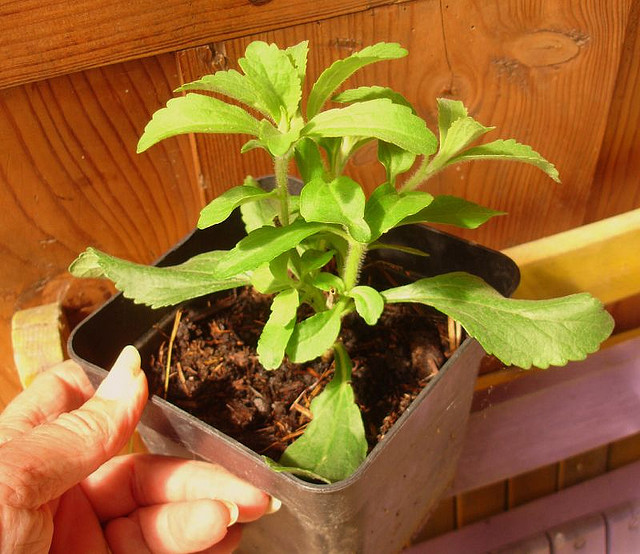
Figure 7. Stevia plant. (original source, used under Creative Commons license from Irene Kightley)
Stevia's climate expectations limit its use for large-scale plantings in Tompkins County. However, it may prove useful as a household-scale sweetener, especially for people who have difficulties with other sweeteners. It can grow as a window plant, getting the sun that it needs while avoiding the cold. Stevia leaves can be used directly as a sweetener without further processing.
Alcohol
All of the natural sweeteners except stevia can be converted into alcohol through fermentation, possibly followed by more energy-intensive distillation. Malt is traditionally used for beer; fruit juices for wine; hard cider, and brandies, honey for mead; and sugar and molasses for rum. In addition to its intoxicating qualities, alcohol can be used as a preservative and to sterilize medical equipment and wounds.
In an energy descent situation, however, sugars are perhaps dangerously attractive as an easy source of alcohol for fuel. Competition between food and energy uses of sugar will likely increase demand (and prices) for sweeteners.
Policy Suggestions
Some projects supporting local sweetener production already exist. Cornell's Master Beekeeper program and its work with maple products in the Arnot Teaching and Research Forest focus on honey and maple syrup. Cornell Cooperative Education offers sessions on fruit juices and preserving.
Some sweeteners, notably cane sugar and corn syrup, are unlikely ever to become local products, and most of the artificial sweeteners are unlikely to become economical local products.
Sorghum and stevia originated in far warmer climates than Tompkins County has to offer, but both are worth exploring in different contexts. For now, sorghum seems useful primarily as a cover crop, with some potential for use as a sweetener. Stevia is more promising because of its ability to grow as a houseplant, and could be an excellent target for Cooperative Extension projects and local nursery development.
There is one great danger here, something that local public health officials should watch for: the possible return of lead acetate. At present, this threat is discussed mostly in the context of imported food, but it could just as easily surface in local food. Watching for symptoms and developing testing protocols could become much more important if the price of sweeteners climbs.
[1] http://www.sucrose.com/lcane.html
[2] http://www.nass.usda.gov/QuickStats/Create_Federal_All.jsp
[3] http://www.sucrose.com/lbeet.html
[4] http://www.grandpappy.info/rsugar.htm and http://www.ehow.com/how_2177131_sugar-beets.html
[5] http://edis.ifas.ufl.edu/sc032
[6] http://www.madehow.com/Volume-4/Corn-Syrup.html
[7] http://www.energystar.gov/ia/business/industry/LBNL-52307.pdf , page 3 and 73
[8] Taylor, Alan. William Cooper's Town: Power and Persuasion on the Frontier of the Early American Republic (Vintage, 1996), 130-4
[9] Perrin, Noel. Making Maple Syrup (Storey, 1983)
[10] http://www.dec.ny.gov/docs/lands_forests_pdf/alb.pdf
[11] http://www.herculesengines.com/sorghum/default.html and http://www.motherearthnews.com/relish/making-sorghum-zb0z11zalt.aspx
By Krys Cail
Over the past decade or so, social trends have emerged that promote local economic exchange around a regional or local food system. The rise in popularity of farmers’ markets is shown by the 16 percent increase in number of markets between 2009 and 2010.[1] Grocery stores, college cafeterias, and now even Walmart stores are trying to source more fruits and vegetables from local growers.
Slow Food is an international NGO that began in Italy but is now world-wide in scope. It celebrates the local and regional culture of the table while encouraging taking the time to enjoy basic social activities, like sharing food. Indirectly, the Slow Food movement also encourages local culinary, agricultural, and wine tourism industries. In the Tompkins County area, we have made significant progress in the development of local and regional food systems, often in collaboration with the region’s grape growers and wine makers. Local food is a current focus of local interest that we would be well served to further develop in view of energy decline and the need to shorten food supply chains.
The Slow Food Movement was among the inspirations for the work of Woody Tasch, a socially responsible investing leader and author. He coined the term “Slow Money” to describe investing in the local foodshed with a portion of one’s portfolio—with an understanding that this investment might pay off better in social and environmental benefits while generating a somewhat lower financial return. His book, Inquiries into Slow Money: Investing As If Food, Farms and Fertility Mattered[2], inspired others, and a number of like-minded individuals launched an effort aimed at starting a Slow Money Movement[3]. They adopted a goal—one million people investing one percent of their assets in local food systems within ten years. They also adopted principles[4] and began working with local and regional Slow Money organizations to establish investment programs. Slow Money has gained some national recognition over the past couple of years, with articles appearing in Business Week[5] (one of their “big ideas for 2010”), Entrepreneur.com [6] (one of “five financing trends for 2011”), Utne Reader[7], Time[8], The Wall St. Journal[9], and The Los Angeles Times[10].
A local group, loosely affiliated with the national movement, has begun planning activities here in Tompkins County. This Slow Money Central New York group can be contacted through the Alternatives Business CENTS program[11] or Local First Ithaca[12].
Envisioning a new investment paradigm is difficult theoretical work, but actually implementing a system that directs flows of investment cash into local food systems is even more difficult. As a nascent movement, Slow Money has moved methodically to build a robust infrastructure for implementation. A growing national network of interested people have been considering how local groups or “Slow Money Alliances” would be structured in order to accomplish the work of bringing more investment into local food systems. The national Slow Money Alliance uses a number of other national organizations as models, including Slow Food, BALLE (Business Alliance for Local Living Economies), Social Ventures Partners, and Transition US. There is a focus on preparing for energy descent through relocalization by investing in local food systems.
Investors may have a simple need—to keep at least a portion of their portfolio invested in the local foodshed. Food buyers, both in the urban areas in the region and in the Tompkins County area, also want to buy food from nearby. This gets complicated very quickly, however, by rural/urban interdependence. Cities, and especially huge port cities like NYC, relocalize by becoming more dependent on a regional, not local, foodshed. Rural areas in the region may be dependent on investment from the urban areas. Tompkins County may or may not be in a position in the future to source investment capital from local investors alone; rural areas may find that they continue to have some dependence on larger regional centers of finance. Many Tompkins County farm and food businesses currently sell a portion of their produce to local markets, and also ship a portion to regional urban population centers, most typically NYC. Tompkins County is within the NYC Greenmarkets catchment area, and currently, many local food producers make the trip to sell in those lucrative markets. While that pattern may change some as the price of truck transportation increases markedly, it may not: sourcing fresh foods from even farther away may cost yet more, making the relative cost of Tompkins County grown food in NYC still attractive.
Additionally, wholesale foodstuff supply chains move food from local farms and food processors into urban markets. Locally-owned shipping companies, such as Regional Access[13], may adapt to new transportation approaches as fossil fuels increase in price. For example, multi-modal shipping via train and/or barge would allow shelf-stable or cooled produce to travel more economically. One gallon of fuel will take a ton of freight about 155 miles by truck, 413 miles by train, and 576 miles by barge.[14] In particular, crops such as grains, beans, seeds, oils, and meats that require a large land base for their production are likely to continue to be imported into large cities from their peripheral rural areas. In many cases, it’s more cost-effective to manufacture minimally processed foods, such as canned or dried fruits and vegetables, closer to where they are grown, and then ship them via lower-energy transport, such as barges or trains. Tompkins County is exceptionally well placed to ship local goods by water; it is possible to send goods by boat from Ithaca to anywhere on the Great Lakes, the Mississippi, or the East Coast.
The Central NY Slow Money Group has been meeting at the Alternatives Federal Credit Union[15]. The group has established a cooperative, interdependent relationship with Slow Money NYC. Central NY generally, and Tompkins County in particular, has many farm and food enterprises, but relatively fewer eager high-net-worth investors. For NYC, that situation is reversed. Some collaboration can be of value, allowing people who eat Tompkins County food to invest in Tompkins County food growers and processors, whether they live very near the farm or in the nearest megalopolis.
Access to capital can be gained by a business through an equity deal (selling portions or shares of business ownership) or through debt instruments (loans requiring a stipulated repayment schedule, but conferring no ownership rights). There are also hybrid arrangements, such as debt instruments that convert to equity shares if not repaid over a certain period. Under the current regulatory framework, it is difficult—not impossible, just difficult—to raise private equity funds for a business venture from a large number of investors of limited means. Typically, “qualified investors” (those with more than one million dollars in net worth) are able to play by somewhat different rules than the rest of us, as the regulators consider them to be savvy enough to fend for themselves in the investment world. To make an offering to a group of people who are not all “qualified investors” (for instance, the membership of Greenstar Cooperative Market), some form of an intermediary fund is probably most practical.
Cooperative membership/ownership organizations are but one model that allows for a large group of investors to provide capital and share risk. The CSA (Community Supported Agriculture) model is another approach. Slow Money groups at the national, local, and NYC levels are all exploring the best ways to facilitate these kinds of transactions, meeting the needs of businesses while mitigating exposure to risk for investors and also keeping some liquidity for investors.
Slow Money group members seek to meet two very different kinds of needs with one suite of mechanisms.
First, investors want to move beyond socially-responsible investment opportunities and now want to invest their money in businesses that have a triple-bottom-line benefit: businesses that are socially responsible and environmentally appropriate while also making some profit. People who understand the inevitability of energy decline may well want their money invested in shortening the supply chains for essentials like foodstuffs.
Second, small farm and food businesses need access to capital to grow and process the foodstuff supplies that we need in a more localized or regionalized food system. Traditional financing, still stuck in a global market worldview, is often disinclined to channel investment into the type of enterprise that could help smooth the adjustment to a world with a lot less oil.
Three opportunities for investment in Tompkins County food systems
Several local initiatives offer both Tompkins County residents and city dwellers the opportunity to invest “slow money” here. In the following, I’ll briefly describe three of them.
Local opportunity number 1: Facilitating land acquisition by prospective farmers trained at Groundswell
Groundswell[16] is a program that uses both classroom teaching and on-farm training to teach students to farm. If there is one practical suggestion for an easier transition in the face of energy decline, it is that more people need to learn to be able to grow food. In a globalized market for energy, food-growing resources have been diverted to the production of fuels such as ethanol, which, in combination with increases in costs of petrochemical inputs into industrial farming, has caused food commodities to experience great price volatility. In the near term, we are likely to see spot price run-ups and shortages, while in the long run, food grown closer to home and with more animal-power, human attention and labor, and organic inputs will be more sustainable. Groundswell’s programs are tailored to producing more farmers through a classroom-based curriculum of instruction delivered at EcoVillage at Ithaca, dovetailed with hands-on farming apprenticeship in a structured program that exposes students to many local farms. The emphasis on sustainable and organic methods prepares new farmers to farm with less reliance on fossil fuels. When newly-trained would-be farmers emerge from this training, however, they require land to farm.
Some communities, such as Burlington, Vermont, have established agricultural land specifically set aside for use by beginning farmers. The Intervale in Burlington is an area that includes community gardens as well as small acreages for use by tenant farmers who are just starting out in vegetable farming. The land has excellent soil and is close to housing in the city. The location is ideally suited for this purpose, and the property has been protected from development by the generous action of a philanthropist. Tompkins County currently lacks such tenant-farming options, but Groundswell is attempting to develop similar options locally.
Joanna Greene, Executive Director of Groundswell, has worked with local farmers and EcoVillage to establish a farm incubator program in Tompkins County. If an intermediary financial capital stream were available, the graduates of such programs would be ideally suited to match with a group of local investors. Alternatively, CSA models or direct equity investment on the part of larger, qualified investors, or debt-to-equity financing, may be more appropriate financing approaches. A “Slow Money” program could take a number of forms. Joanna has been participating in Slow Money planning talks, representing the needs of beginning farmers.
Local opportunity number 2: Facilitating grain processing for local grain farmers through Farmer Ground Flour
Grain farmers Erick Smith and Thor Oeschner joined forces with Greg Mol about a year ago to begin a grain-milling operation in Trumansburg, Farmer Ground Flour[17]. They use a modern mill that can make up to 15,000 pounds of flour a month. They began by grinding the wheat, spelt, corn, rye, and other grains they grew. At first, they had to take the grain to Penn Yan to dehusk it, but now that operation is handled at one of the farms.
They clearly hit an area of the food system ready for development. By January 2011 they were in the New York Times in an article titled “Reviving New York State’s Grain Belt”[18]. To quote from the article:
It is a cooperative effort among several farms growing organic corn, spelt and wheat, often heirloom varieties…. Packaged under the Farmer Ground Flour label, the flours are sold in paper sacks in Greenmarkets by Cayuga Pure Organics, a participant in the cooperative. The flours are fresh, and have not sat for months in warehouses.
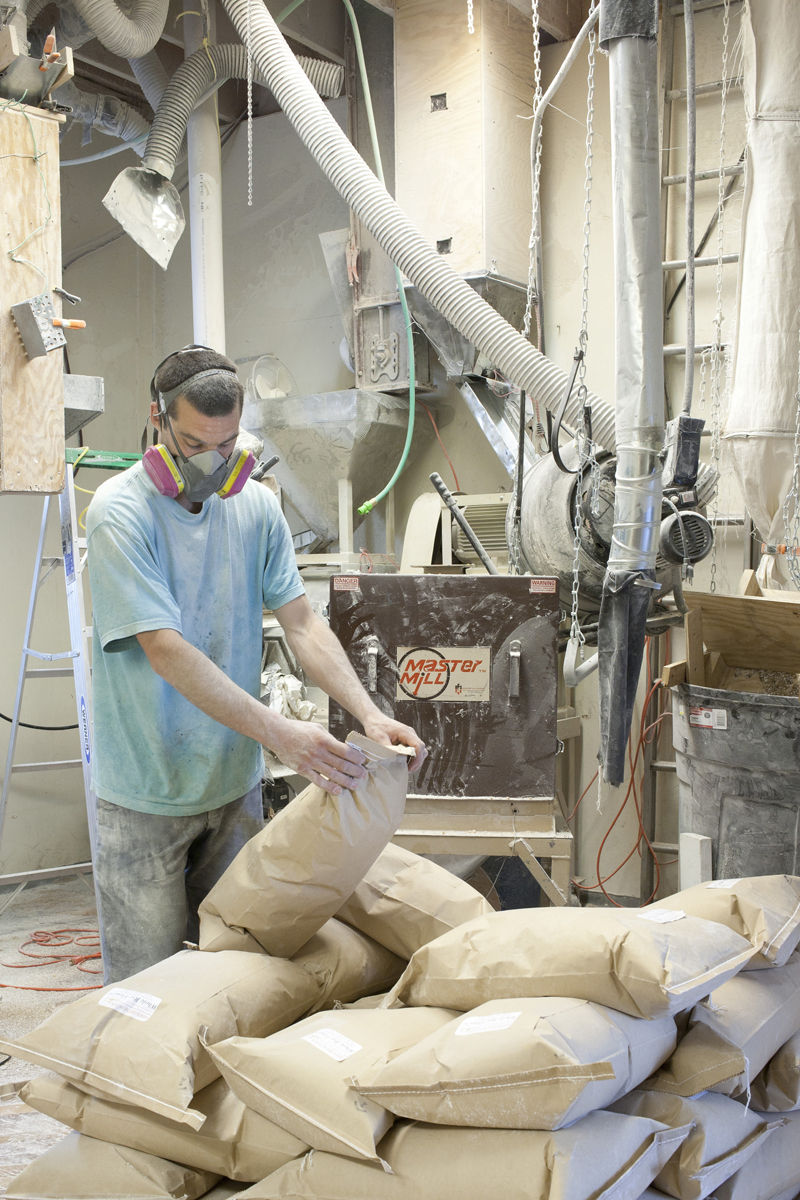
Greg Mol bags rye flour at Farmer Ground Flour
Located at the old Agway building in Trumansburg, the mill occupies a site where animal feed was milled in the past. In many ways, it is an ideal site for an enterprise that includes a lot of unloading grain from trucks and a lot of loading flour and other milled products back onto them.
Farmer Ground Flour has been very successful in meeting an emerging need for artisan-milled flours and meals in NYC. That is not, however, their only emphasis. They also sell flour and other milled products to the local market, through Regional Access, Greenstar Coop Natural Foods Market, and Garden Gate home delivery service. A recent edition of GreenLeaf[19], the newsletter of Greenstar Coop Natural Foods Market, showed the big-picture development of Farmer Ground Flour in historical perspective:
Farmer Ground’s success is part of a larger effort to restore grain growing to New York state. While now thought of as dairy country, upstate New York once grew so much grain that Rochester topped the nation’s flour production in the mid 1830s, giving it the nickname “Flour City.” (A later rise of nursery businesses changed that moniker to “Flower City.”) That flour was shipped to New York City and beyond via the Erie Canal.
Oechsner and Smith have both worked closely with Elizabeth Dyck, of the Organic Research and Information Sharing Network, which seeks to reintroduce wheat growing to New York state… [She] is working with farmers like Oechsner to identify those [varieties] that grow well in New York’s challenging climate, and, just as importantly, also taste great and bake well.
…Like other foods, “the flavor has been bred out of wheat,” [Oeschner] explained, in favor of yield and uniformity. “Growing the old wheat varieties is like growing an heirloom tomato.”
“Farmer Ground Flour is really making a difference for other farmers,” said Dyck. “They’re a great example of farmers banding together to put needed infrastructure into place, in this case a milling facility. They deserve enormous amounts of respect.”
No question, there is market interest, both regionally and locally, in the product of a local grain mill. But how does a small, “farmer-owned, grown, and ground” operation finance the necessary equipment purchases to keep up with the demand? Greg Mol, Erick Smith, and Thor Oeschner approached banks to seek financing for their equipment needs, but the amount of money that they sought to borrow was too small to fit the lending programs available. They have pursued working with individuals in the community to finance their equipment needs, but there is no organized program for doing so. The need for relatively small infusions of capital hampers their ability to expand and improve Farmer Ground Flour.
Will grain farming for human food expand in New York State only as quickly as the processing capacity is able to expand? Slow Money could be a means by which those interested in the re-development of grain farming in New York State could participate in the effort to develop the needed processing capacity. Greg, Erick, and Thor have already made connections with a few local investors to gain some access to expansion capital, and hope to do more of this in future. And the availability of their product has already spurred other business start-ups and more local investment opportunities. For instance, Wide Awake Bakery[20] operates a bread CSA using Farmer Ground Flour as an input.
Local opportunity number 3: Expanding Cayuga Pure Organics into rolled grains
Erick Smith is not only a partner in Farmer Ground Flour, he is also a principal of Cayuga Pure Organics[21]. Cayuga Pure Organics is the source of much of the “locally grown” beans and grains offered for sale in the Greenmarkets, co-ops, and restaurants of NYC. They also supply our local Tompkins County region with these products. Cayuga Pure Organics was also featured in a New York Times article this year, in the Magazine under “Field Report - Market Watch”[22]. This excerpt shows how Cayuga Pure Organics evolved to serve the niche market it now depends on, growing grains and beans for human consumption, to be sold in Tompkins County and NYC:
In 2003, Erick Smith and Dan Lathwell — men nearing 60 who’d farmed intermittently when not working at Cornell or teaching elsewhere — thought they’d hit upon a smart niche when they created Cayuga Pure Organics to grow pesticide-free feed for the region’s newly organic dairy farms. Two years later, the Ithaca food co-op and a natural-food distributor asked if they’d grow organic beans on their land in the town of Caroline. They were also connected with a local taqueria, and soon the two were struggling to keep up with the restaurant’s weekly order for 500 pounds of black and pinto beans. Then, in the fall of 2008, the farm inspector for New York’s Greenmarket tracked them down in her quest to find a grower to satisfy the demand for local beans and grains.
“We hemmed and hawed, thinking that going to New York City is a whole step up in the organizational process,” said Smith, an articulate man for whom overalls and a graying beard are a natural fit after years of teaching math education. It also required getting up to speed in marketing, which for farmers means both self-promotion and literally selling at markets.
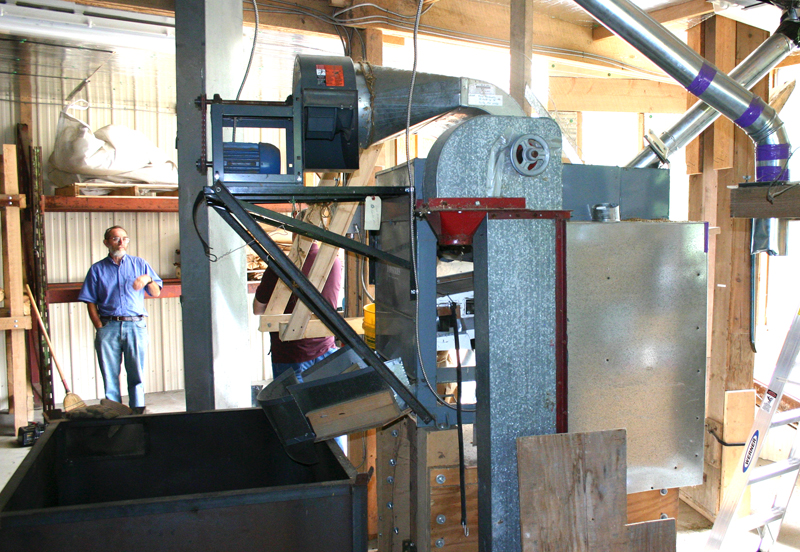
Owner Erick Smith with wheat cleaning equipment at Cayuga Pure Organics
Many of the processes for harvesting, shelling, and cleaning the beans and grains can be handled directly on-farm. Over time, Cayuga Pure Organics has become less dependent on other farmers for the use of processing equipment, streamlining the efficiency of the operation. However, specialized equipment for such tasks can be expensive, and it can be difficult to raise the capital needed to purchase it, house it, and integrate it into the operation. For some time, Cayuga Pure Organics has had plans to purchase equipment to be able to roll oats. Oats are a crop well-suited to our climate in Tompkins County, but they are almost always consumed by humans in the form of rolled oats, also known as oatmeal. Cayuga Pure Organics applied to the NYC Slow Money Group’s first Entrepreneurs Showcase to pitch the idea of investing in this business expansion. They were one of only ten businesses that will be featured in the first Showcase, giving them the opportunity to gain Slow Money investment for this business expansion.
Conclusion
The area between the growing consciousness on the part of consumers that they want to support a more localized food chain on the one hand and farmers who want to grow and provide local foods on the other is ripe with possibility to re-invent investment. While the shape of this emerging movement is not yet clear, the motivations of farmers, food processors, short-haul food transporters, and restaurant chefs are clearly aligned with those of investors with an interest in facilitating a more localized farm and food sector. The roles of regional investors, and the roles of local investors, will be established in part based on who steps forward to help shape the food web through investment and marketing. Perhaps, depending on developments, the Ithaca Hours local currency revival will also play a role. Establishing a farm and food sector in Tompkins County that is able to provide grains, beans, oils, meats, and dairy products to the metropolitan areas of the region as well as the local market seems a relocalizing strategy worthy of the investment of both thought and money.
Postscript from the Farmer: Erick Smith notes some additional benefits and hurdles
Erick Smith of Farmer Ground Flour and Cayuga Pure Organics read an early draft of this article and responded with the following note, which he has kindly given us permission to include here.
The basic products we produce are helping support others in the community. Farmer Ground Flour is one such startup. Another is Wide Awake Bakery in Mecklenburg… Ron Springer in Van Etten is using our grains to produce sprouted products including sprouted gain crackers, sprouted rolled grains, and sprouted breads. Also, Hans Butler, an Ithaca-based chef, is actively developing products from our beans and grains under the name: Cayuga Pure Organics, Chef Hans. He is currently producing the bean dips that are available at Greenstar and is in the process of developing other products. This year we are also growing mustard seed for Mary Graham, a local mustard producer. The point is that Cayuga Pure Organics and Oeschner Farms, as producers of basic organic commodities, provide the basis for other small-scale food processors to create their own products based on our locally-grown commodities.
A major struggle that both CPO and Farmer Ground Flour face is the lack of infrastructure to support what we are trying to do. 100 years ago, operations like ours were scattered across NY State and there was appropriate equipment, repair parts, local expertise, and market structures in place to support these operations. One of our technical and financial challenges is recreating this infrastructure in a modern world where few models are available.
Another major issue we both face is that, compared to conventional farms and conventional flour mills, we are very, very small-scale, yet from the perspective of many of the producers of local produce, we seem large. A major reason is that growing grains and beans and milling flour require a certain level of mechanization that forces certain economies of scale. So the tractors we use are small compared to what would be found on typical crop farms and the 40-year old combines we use for harvest are so small that the size machine we use is no longer even available new. To operate on a smaller scale would make our products prohibitively expensive. Yet, because we are so mechanized, we are very dependent on fossil fuel energy. Farmer Ground depends on electricity and the farms depend on diesel fuel. We know that this has to change and that we face a major challenge in creating that change. Greg is currently actively looking into the prospect of using water power to produce the electricity to run the mill. We currently are using about 10% bio-diesel and would like to use more, but the older diesel engines in our equipment can have problems with higher levels of bio-diesel. So, we know change is coming and may very well, at some point, be looking for ways for the community to support our efforts, both technically and financially. If the Slow-Food and Slow-Money communities are serious about supporting the needed changes for a local-foods economy, these are issues that we all need to be looking at together.
Further reading
Previous TCLocal articles on local aspects of agriculture, food systems, solid fuel (biomass) agriculture, and food processing have included the following:
2008.01.27: Fruits in a Post-Peak Tompkins County [http://tclocal.org/2008/01/fruits_in_a_postpeak_tompkins_1.html]
2008.12.09: Local and Urban Small Livestock and Poultry [http://tclocal.org/2008/12/local_and_urban_small_livestoc.html]
2009.02.25: Food Processing in Tompkins County [http://tclocal.org/2009/02/food_processing_in_tompkins_co.html]
2009.03.28: Examining the potential local foodshed of Tompkins County [http://tclocal.org/2009/03/examining_the_potential_local.html]
2009.06.16: Can New York State Feed Itself? [http://tclocal.org/2009/06/can_new_york_state_feed_itself.html]
2009.07.25: Visioning County Food Production, Part One: Introduction [http://tclocal.org/2009/07/visioning_county_food_producti.html]
2009.09.02: Visioning County Food Production, Part Two: General Problem Areas in Sustainable Agricultural Design [http://tclocal.org/2009/09/visioning_county_food_2.html]
2009.10.15: Burning Transitions [http://tclocal.org/2009/10/burning_transitions.html]
2010.01.20: Heating with Biomass in Tompkins County [http://tclocal.org/2010/01/heating_with_biomass_in_tompki.html]
2010.02.13: Visioning County Food Production, Part Three: Seeing County Food Production as an Integrated Whole [http://tclocal.org/2010/02/visioning_county_food_prod_3.html]
2010.04.26: Funding and Finagling the Transition to Biomass Heat and Power [http://tclocal.org/2010/04/funding_and_finagling_the_tran.html]
2010.05.31: Visioning County Food Production, Part Four: Urban Agriculture [http://tclocal.org/2010/05/visioning_county_food_prod_4.html]
2010.06.20: Visioning County Food Production, Part Five: Peri-urban Agriculture [http://tclocal.org/2010/06/visioning-county-food-prod-5.html]
2010.07.31: Visioning County Food Production, Part Six: Rural Agriculture [http://tclocal.org/2010/07/visioning_county_food_prod_6.htm]
2011.01.18: Health and Food Security [http://tclocal.org/2011/01/health_and_food_security.html]
2011.04.15: Chickens in the Energy Descent [http://tclocal.org/2011/04/chickens_in_the_energy_descent.html]
Notes
[2] http://www.slowmoney.org/book.html
[4] http://www.slowmoney.org/uploads/1/3/6/7/1367341/principles.pdf
[5] http://www.businessweek.com/smallbiz/running_small_business/archives/2009/12/big_ideas_for_2.html
[6] http://www.entrepreneur.com/article/217795
[7] http://www.utne.com/Politics/Utne-Reader-Visionaries-Woody-Tasch-Slow-Money-Alliance.aspx
[8] http://www.time.com/time/business/article/0,8599,1921889,00.html
[9] http://online.wsj.com/article/SB125305092106313571.html
[10] http://articles.latimes.com/2009/sep/22/business/fi-smallbiz22
[11] http://www.alternatives.org/cents.html
[12] http://localfirstithaca.org/
[13] http://www.regionalaccess.net/Home.html
[14] http://www.waterwayscouncil.org/study/public%20study.pdf
[16] http://www.groundswellcenter.org/
[17] http://farmergroundflour.squarespace.com/
[18] http://www.nytimes.com/2010/01/06/dining/06flour.html
[19] http://www.greenstar.coop/index.php?option=com_content&task=view&id=565&Itemid=219
[20] http://www.wideawakebakery.com/
[21] http://www.cporganics.com/live/
[22] http://www.nytimes.com/2010/10/17/magazine/17food-t-000.html
By Tom Shelley
Introduction
Birds and their eggs have been part of our food chain for tens of thousands of years. In hard times, birds and their eggs were survival foods. In the not too distant future, chickens will be a pillar of survival and resiliency as we proceed into what we believe to be a looming energy descent. Chickens are comparatively easy to raise and provide high quality meat and eggs all year round. Some writers prefer ducks,[1] and ducks are an important contributor to the small farm environment, but well-managed chickens are a better fit as an integrated component of a sustainable farming system.[2]
Raising chickens for eggs provides a highly versatile source of protein. Eggs can be stored for a reasonable period of time with relatively little energy input. They may be sold or traded for other goods. In her new book, The Resilient Gardener, Carol Deppe defines five crops you need to “survive and thrive—potatoes, corn, beans, squash and eggs.” This article will consider some of the parameters for raising chickens, explain how these parameters will be affected by the energy descent, explore some alternatives for current practices, and offer many questions still to be answered.
Which came first, the chicken or the egg?
In the energy descent, raising chickens first for eggs and secondarily for meat will be a preferred strategy, for three reasons. First, the nutrients in eggs are denser and more complete than the bird’s meat itself; second, eggs can be stored or preserved fairly easily for future use; and third, eggs have more versatility for food preparation than just the chicken meat itself. Mayonnaise, custards, etc., depend upon the chemistry of the egg to make a unique food product. Roosters, roughly fifty percent of hatchlings, are generally reserved for meat birds, as are hens that are no longer productive.
There are currently 113 breeds of chickens recognized by the American Poultry Association.[3] Many more varieties and strains of chickens are available, and the selection of the appropriate chickens can be a daunting task. Laying hens are selected for their egglaying productivity, length of their productive years, heartiness, body size, egg color, temperament, and other factors. I am familiar with Black Australorps, but Plymouth Rocks, Orpingtons, Rhode Island Reds and a number of other breeds are reliable egg producers. Some aids are available for novice chicken owners to help with breed selection.[4]
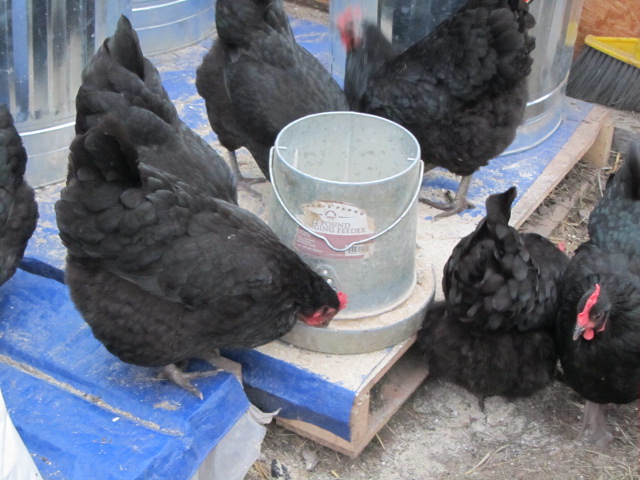
Figure 1. Black Australorps feeding
One distinct advantage of chickens (and many other fowls) is their ability to easily breed and brood eggs to make more laying hens. There are many devices that have been invented to incubate eggs to produce chicks. In the energy descent, especially during times of crisis, it may not be possible to incubate eggs with electrically powered equipment. Since it is fairly easy for chickens to produce and raise their own young, it is strongly advised that all small scale chicken raisers lean how to breed and brood their own chicks to ensure a sustainable supply of laying hens. Several good references for raising chickens from eggs have been published. One highly recommended book is Gail Damerow’s Storey’s Guide to Raising Chickens.[5]
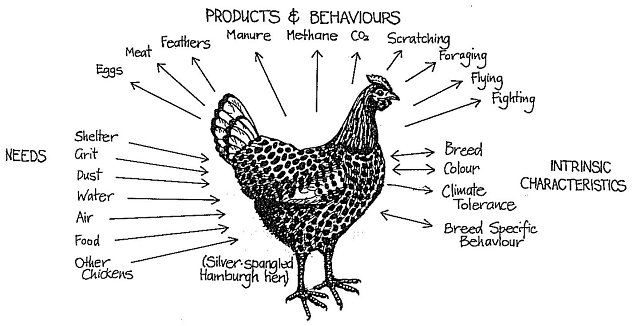
Figure 2. Selecting a breed (from [15])
Day-old chicks are widely available from many sources, local, regional, and national. They are going to be increasingly expensive in the future due to rising transportation costs and newer food security regulations. In a steep energy decline, the traditional regional and national sources may no longer be affordable or even available at all. We will need to depend upon home-brooding or smaller scale, local commercial brooding/incubation of chicks.
Housing options
Many beginning chicken owners have romantic notions of “free-range” chickens. Free-range chickens usually have at least a 50 percent loss rate due to predators. Also, the eggs of free-range chickens can be difficult to gather because they are often laid in hidden, inaccessible places, greatly reducing the useful yield of the flock. If you are dependent upon chickens and their eggs for a subsistence food base, “free-range” is not a good idea.
To maintain high levels of productivity and prevent predation, chickens must be watched over and, at a minimum, contained within a secure fence high enough to keep the chickens in the pen. An electrified fence powered by a small solar panel will prevent almost all small-animal predation. For an example of this type of fencing see [6]. These portable fencing systems, while not inexpensive, allow for frequent relocation of the fence to enable appropriate management of the areas being pastured. Netting the penned-in area may be needed to prevent predation from hawks. Chickens kept in fenced-in enclosures are said to be pasturing or “free-roaming,” but they are not free-ranging.
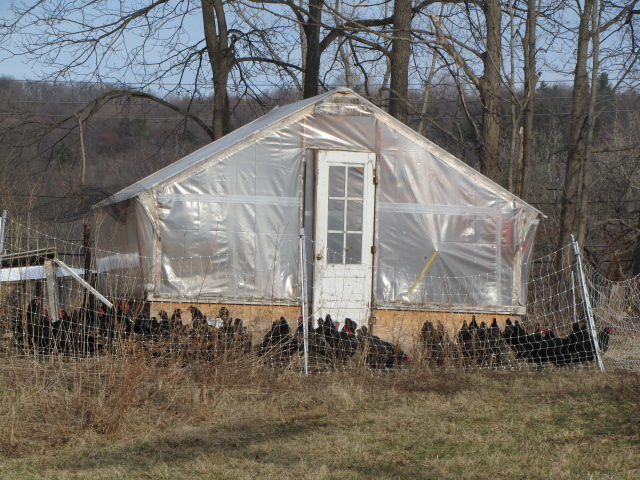
Figure 3. Chickens behind electro-net fencing
The construction and use of a secure chicken coop that is small-mammal proof is strongly recommended. Our chickens roost in their coop and are tightly closed in at night to prevent loss from predation and to provide shelter during bad weather, especially over the winter. Chicken coops can be made from a wide variety of materials, from hundreds of available designs. For examples, see [7].
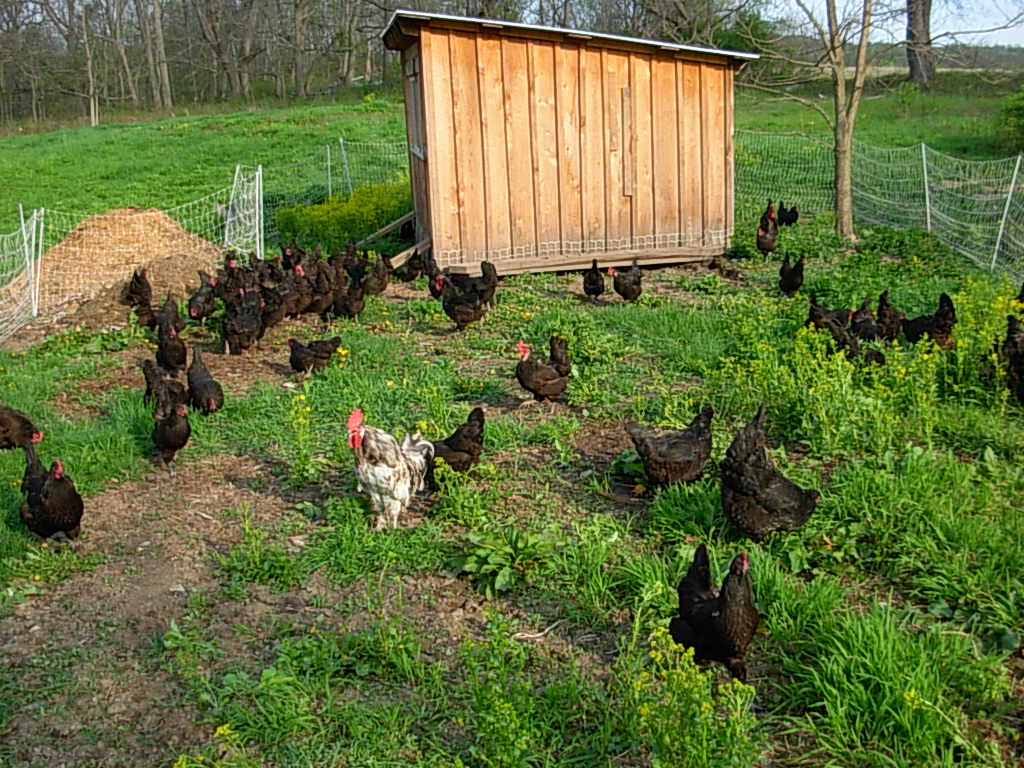
Figure 4. Chicken coop on skids
The use of chicken tractors is also very popular and greatly extends the functionality of having chickens while providing additional protection and security. A chicken tractor is a lightweight, moveable coop. Many designs are available, depending upon your use of the tractor and the number of chickens involved. Chicken Tractor, by Andy Lee and Pat Foreman,[8] gives extensive information on the construction and use of chicken tractors. Chicken tractors can be used to pasture chickens, with the tractor being moved to fresh grass as needed. If tightly constructed and installed, a chicken tractor will provide reasonable security against attacks by small predators. Our chicken tractors are a wood frame covered with chicken wire with a hinged piece of plastic sheet roofing material for a lid. The lid is normally hooked shut when the tractor is in use. Some people use small hoop houses for chicken tractors. You will see a wide variety of chicken tractors at [9].
The best use of the chicken tractor is to prepare an existing garden for planting. Six to ten chickens in one of our chicken tractors will eat everything organic down to the ground over a 4 x 8 foot area in 10 to 14 days, including all sorts of difficult-to-eradicate weeds and grasses. We then loosen up the area with a fork to remove the big roots of last years’ crops and weeds while mixing in the chicken manure and some additional compost. Other techniques are possible, such as working up a new garden plot or feeding specific home-grown crops to chickens.
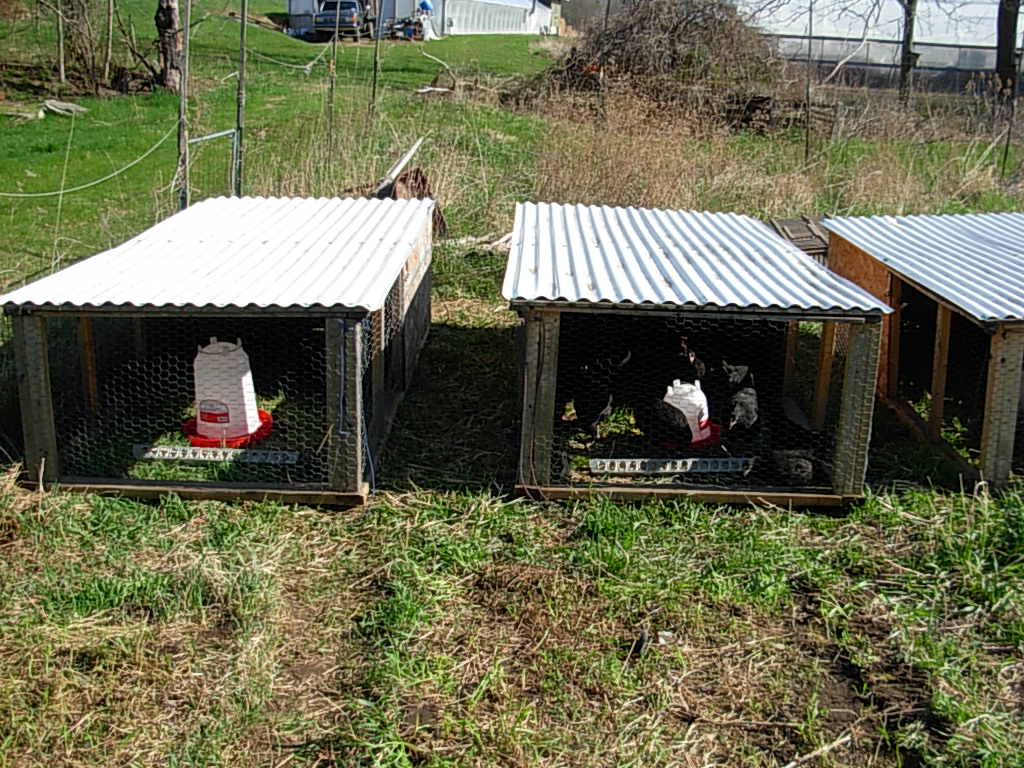
Figure 5. Chicken tractors in the garden
Food and Water
For many small-flock chicken owners, the cost of traditional grain- and soy-based feeds is 70 percent of the cost of the maintenance of their flock.[10] Commercial grain products used in chicken feeds consume vast amounts of fossil fuels in their production, processing, and distribution. Overall, agriculture contributes eight percent of the anthropogenic component of global warming gases. Even a modest rate of energy decline will have disproportional impacts on the cost of laying mash, pushing the price of chicken feed out of the range of feasibility for many small flock owners. This is already happening. A steep rate of decline would mean that nicely milled and amended layer mash in 40-pound bags may no longer be available at all.
Fortunately, for those who can develop a flexible and resilient approach to feeding chickens, many options to currently available commercial chicken feed are available. Chickens will eat almost anything, with some major exceptions (alliums and citrus in particular). If chickens are free-roaming and pastured and given a variety of supplementary foods, they will eat those foods that provide adequate nutrition. Many small flock owners feed mostly kitchen food scraps and some scratch feed (cracked corn or corn/wheat mix) and have healthy chickens and lots of great eggs. Owners of larger flocks cannot supply enough scraps to provide adequate nutrition, so they traditionally resort to commercially available feed mixes.
As the energy decline progresses, access to commercially available layer mash will be increasingly limited for the the small flock owner due to increased costs, limited access to some ingredients commonly used in commercial feed mixes, and other factors (the difficulty manufacturers may have in repairing or replacing equipment, for example). If land is available, many crops can be grown for chicken feed with low technology and few investments. Since chickens will eat everything from amaranth to zucchini,[11] there are many options, depending on the type of soil and the availability of water and nutrients (compost), seeds, labor inputs, etc. Carefully selected crops, most of which are human food crops as well, will allow for adequate nutrition for a flock of chickens over the seasons. Larger flocks are going to require large plots of land, with more grains and seeds to be grown and saved for the winter.[12]
Other local grain and feed options are readily available. For example, I have been purchasing “waste” grain products from Farmer Ground Flour in Trumansburg, New York. I mix supplements with the waste grain products and make a high-grade, organic layer mash. The carbon footprint of my homemade layer mash is significantly less than feed from other regional or national outlets. Other nearby grain mills have sold “seconds” or waste products to local farmers over the years for chickens and other farm animals. I anticipate that feed co-ops will develop to split up the rising costs of the components of feeds. Fish and crab meal, for example, are commonly used feed amendments. Being in the interior of the country, traditional sources of fish meal would be either very expensive or non-existent, depending upon the slope of the energy decline curve. Perhaps a local source of farmed fish for fish meal could be developed?
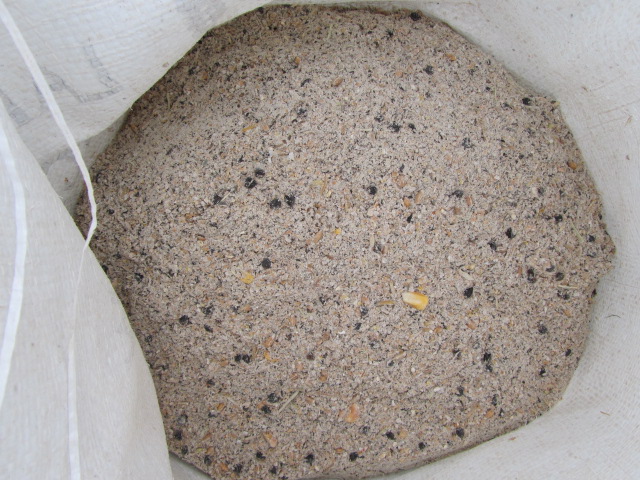
Figure 6. Locally made layer mash
Cooperative efforts to share resources for chicken feed would be very useful. Sharing bigger farming equipment, sharing saved seeds, and trading chicks to maintain diversity are examples. Chickens love milk, yogurt, and other dairy products. Apples, pumpkins, squash, and other fall veggies that store fairly well can be fed over the winter, providing diversity when pasture isn’t available. Waste vegetables from nearby farm stands can often be gleaned in the summer and fall, and they add value to the nutrient intake of your flock. Chickens love hay in the winter, and we have very local sources of organic alfalfa hay. Duckweed, which commonly grows on local ponds, is a highly nutritious chicken food (see the TCLocal article “Visioning County Food Production, Part 6” for more about duckweed in sustainable food production). Sprouted grains provide grass in the winter; I use oat grass, because oats are very inexpensive and germinate readily.
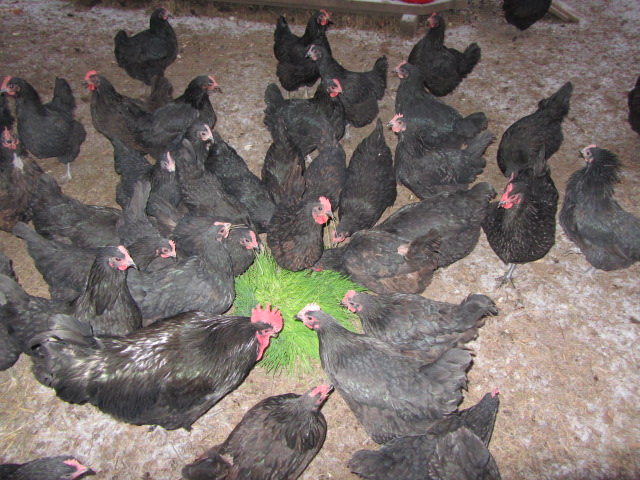
Figure 7. Chickens eating oat grass
Other options include feeding chickens active compost or certain insect larvae. Active compost has a high percentage of insects and other high-protein sources perfect for chickens. Some chicken farmers raise meal worms or black soldier fly larvae as chicken feed.[13] These techniques can significantly reduce the consumption and dependence upon grain-based feeds and their high fossil fuel inputs and large carbon footprint.
Chickens need a lot of water. Laying hens use up to two cups of water per day and even more in hot weather.[14] Water requirements are often higher in winter, when humidity is low and feeds and grasses are dry (hay, alfalfa cubes). The chickens’ water needs to be clean, potable water from a reliable source. Springs, wells, and urban water sources are all commonly used. In the early stages of energy decline, most of these sources will remain stable, although spare parts for pumps and wells may be hard to obtain at times. In a steep energy decline, energy sources and systems (delivery of public water supplies) will be disrupted or non-existent, parts will be impossible to obtain, and only secure natural sources (uncontaminated springs or wells) will allow for good quality water. Alternatives need to be developed. Clean rainwater catchment on a scale to water a modest flock is possible for most chicken owners.[15] The catchment and storage systems would need to be in place and functional when needed. Chickens can also drink from a clean stream or pond if one is available. Contamination from agricultural runoff, especially if you are raising organic chickens, and from animal wastes is of serious concern when using a stream or pond as a water source.
Other requirements for chickens are oyster shell and grit. Layer hens have a high calcium uptake, and the general recommendation, based on information from Lakeview Organic Grain, is 127 pounds of crushed oyster shell per ton of feed. The grit, needed to grind food internally, is most frequently sold as ground granite. Grit is free-fed; in a free-range or free-roaming situation most chickens will find all of the grit they need outside. Grit is most often fed in winter, when snow cover and frozen ground prevent normal foraging. Oyster shell will be more problematic, especially in a steep energy decline, and alternative materials and sources need to be found. Ground up egg shells provide one option, but this is a limited source.
Flock management
Many management issues will be affected by energy descent. Moving a coop from pasture to pasture is easy if you have an appropriately sized tractor and the fuel to run the tractor. If not, do you have a neighbor who owns a horse who will help you every two weeks or so? Some may elect to have their own horse; perhaps several nearby farms could share a horse and the expense of maintaining the horse. Building a coop with wheels would facilitate movement, perhaps only requiring a few strong people.
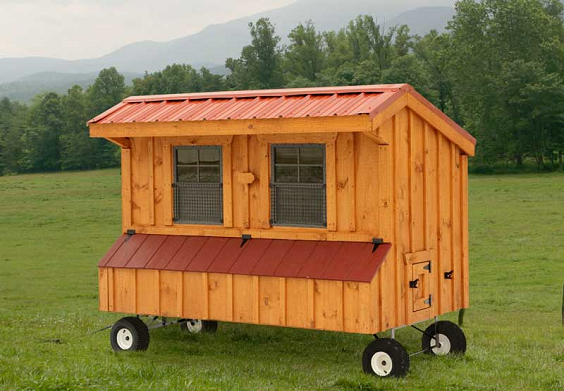
Figure 8. Coop on wheels
As the energy descent progresses and liquid fuels become more expensive, different business models will quickly evolve. We now deliver most of our eggs to our CSA customers. Perhaps there could be a central pickup point arranged for several customers in one area so as to save on fuel costs. Feed co-ops will develop to split up the rising costs of the components of feeds. Joint ownership of expensive equipment will enable a number of farms to thrive.
As eggs become an increasingly valuable component of our diets, food security issues become more important. There are well-established protocols for the handing of birds and eggs that reduce the possibility of contamination and disease transmission.[16] This is an area that is often poorly understood by small-flock owners.
Keeping chickens cool in summer and warm in winter is important. The use of solar heating and solar PV for other equipment will become increasingly important. If global warming increases at the rates projected, it may be necessary to change the breeds or varieties of chickens and other fowl to those that tolerate heat better than traditional breeds.
Attention to manure management will be especially important. Chicken manure is very rich in nitrogen and other nutrients. It may be composted or mixed directly into the soil. The appropriate rotation of fertilized pastured areas, gardens, and grain plots can maximize the inputs of chickens to the nutrient cycle. In a steep energy descent, most or all of our resources will come from the farm itself.
The management of breeding stock, the culling of poor producers, and other hands-on management issues will need to be addressed to maximize the long-term success of the flock. Health issues will may be more of an issue, especially in a steep energy descent. Our chicks come from Missouri, arriving with vaccinations for several diseases. Where would these vaccinations come from in the future? Very few vets know about chickens. Last year New York State defunded the state veterinarian position that has served the poultry industry in New York for several decades, so there is only thin support of flock health available going into the near future. How are we going to learn to be our own vets as far as our flock health is concerned? There are many challenges ahead.
Conclusion
Readers of this article may not live to see the hard times ahead, but their grandchildren certainly will. Chickens and other fowl will be an integral component of a resilient community as we enter an uncertain future.
References
[1] Deppe, Carol. The Resilient Gardener. Chelsea Green Publishing, 2010, p. 178.
[2] See the TCLocal series of articles on local food production by Karl North, beginning with “Visioning County Food Production—Part One: Introduction” (http://tclocal.org/2009/07/visioning_county_food_producti.html).
[3] See, for example, http://139.78.104.1/breeds/poultry/, from Oklahoma State University.
[4] See, for example, http://www.mypetchicken.com/chicken-breeds/which-breed-is-right-for-me.aspx.
[5] Damerow, Gail. Storey’s Guide to Raising Chickens. Storey Publishing, 1995. For additional general information see http://www.backyardchickens.com/lcenter.html and http://www.lionsgrip.com/pastured.html; Small-scale Poultry Keeping by Ray Feltwell (Faber and Faber, 1992); and the periodical Backyard Poultry (http://www.backyardpoultrymag.com).
[6] http://www.premier1supplies.com/c/poultry_supplies/electric_netting/
[7] http://www.freewoodworkingplan.com/index.php?cat=212. Sometimes the home page works better: http://freewoodworkingplan.com/.
[8] Good Earth Publications, 2006.
[9] http://home.centurytel.net/thecitychicken/tractors.html
[10] Storey’s Guide to Raising Chickens, p. 53.
[11] For example, http://steephollowfarm.wordpress.com/2009/06/18/chickens-like-a-lot-of-things/. See “Local Notes on Chicken Feed” (http://tclocal.org/docs/chicken-feed.pdf) for some ideas about local possibilities.
[12] See Logsdon, Gene, Small-Scale Grain Raising (Chelsea Green Publishing, 2009).
[13] See http://www.sialis.org/raisingmealworms.htm#timetable and http://blacksoldierflyblog.com/.
[14] Storey’s Guide to Raising Chickens, p. 60.
[15] See, for example, Mollison, Bill, Permaculture—A Designers’ Manual, 2nd ed. (Tagari Publications, 2004), pp. 165-170. A detailed overview of rainwater catchment techniques developed in third-world countries can be found in Gould, John and Erik Nissen-Petersen, Rainwater Catchment Systems for Domestic Supply (ITDG Publishing, 1999).
[16] http://www.eggsafety.org/producers/food-safety-regulations
By Bethany Schroeder
Introduction
To many people, health is largely a matter of perspective. In the main, we subscribe to a working definition that includes feeling physically good; able to act and react according to some semblance of a reasonable self image; remaining fit in a passable manner; and weighing in at something near the insurance industry’s norms.
Food security is another matter: some people describe food security as little more than being assured of the next meal, whereas others are unsatisfied with anything less than pantries full of canned and dried goods and well-stocked freezers. Members of disciplines as disparate as nutrition, planning and development, medicine, social justice law, and the armed services have considered the meaning and uses of the term with a view to overcoming the implied warning in its terminology.
Both health and food security are fraught with expectations at social, academic, and governmental/regulatory levels. Both are states of mind as well as physical conditions. Absent either, the human organism eventually dies. In short, health and food security are necessary to life—all life, and in the case of the present examination of the terms, most pointedly to human life. Health and food security are worth consideration because they are basic to life and because they have at all times in specific contexts existed in some imbalance. In general, when it comes to health and food security we expect much and plan all too little.
The author, in search of food security
Food security versus food insecurity
Depending on the audience, experts have defined food security in formal and informal ways. In 1996, participants at the World Food Summit identified the presence of food security as in effect “when all people at all times have access to sufficient, safe, nutritious food to maintain a healthy and active life.”[1] Participants also emphasized the combined requirements of being able to find and afford both nutritious food and food that meets an individual’s preferences.[2] According to the Bureau of Public Affairs, it is thought across the globe that, quite simply, people are food secure when they can find and pay for food. Under this rubric, families are food secure when the members neither experience hunger nor fear starvation.[3] Furthermore, people with ethnic traditions and socio-religious mandates require that food be culturally appropriate. Many will refuse foods—even when hungry, even when in the midst of a food shortage—that fail to meet their expectations.[1] At least one local source, the Community Food Security Coalition, maintains that “community food security is a condition in which all community residents obtain a safe, culturally acceptable, nutritionally adequate diet through a sustainable food system that maximizes community self-reliance and social justice.”[4]
Regarding the relationship between health status and food security, it may be sufficient to define good health as the ability to withstand the effects of exposure to illness and injury. The connection between nutritious food and health status is, from this perspective, fundamental, whether or not innate. Leaving aside the question of how to educate people to make healthy and nutritious choices, assuring access and affordability becomes a matter of public policy and the generous application of social support.
Also worth noting is the counter-intuitive notion of wide-spread hunger and food insecurity in the presence of abundance.[5] Inequalities in distribution combined with general and pervasive poverty and a lack of knowledge about food preferences and prohibitions can result in food insecurity so endemic that neither individuals nor communities can overcome barriers to supply and access adequate to mitigate the problem.
In the past couple of decades, the terms and circumstances of food insecurity have been the subjects of increasing scrutiny. Citing 1990 research findings, the USDA describes food insecurity as “. . . limited or uncertain availability of nutritionally adequate and safe foods or limited or uncertain ability to acquire acceptable foods in socially acceptable ways.”[5] What is more, the conditions associated with food insecurity are just those that we expect will result from declines in the availability of energy and the subsequent threats to the status of human health.
Hunger, food insecurity, and the effects on health
Until recently, the absence or presence of hunger was the primary measurement by which many experts assessed food security as it applies to an individual’s well-being. Without minimizing the significance of hunger, researchers recognized that hunger in a household might be an inconsistent problem and might apply primarily to one or more persons without being true of the entire household. Wanting to understand the role of hunger as it relates to food insecurity, researchers and policy makers began to think about food security or insecurity in the larger context of the community and the availability of food in general. Questions that routinely arose included the following:
- What are the circumstances of hunger in a household?
- Who, in a household, experiences hunger, and why?
- What are the effects of hunger in a household?
- What is required to relieve hunger, both temporarily and permanently?
Such inquiries found that hunger is typically the result of inadequate resources to obtain food but can exist when food choices are limited, too. Hunger often affects select adults who may ration food for more vulnerable members of the household. In the presence of food insecurity, hunger can affect everyone, especially the very young and the very old. Effects can include periodic hunger and the potential to develop food insecurity, if a lack of resources to acquire food or the unavailability of food is the cause of hunger. To achieve short- and long-term improvements in relieving routine or chronic hunger accompanied by food insecurity requires that planners, leaders, farmers and other food producers, just to name a few invested parties, develop a systemic understanding of the problem.
As a result of this and associated research, the USDA in particular altered its use of terms related to hunger and food insecurity, and has continued to look for refinements in ways of categorizing and addressing both phenomena. Germaine to this TCLocal article is the realization by USDA and others that the understanding of hunger deriving from food insecurity “. . . results in discomfort, illness, weakness, or pain that goes beyond the usual uneasy sensation [of hunger].”[5] Especially during the past two decades of discussion and investigation, policy makers and those responsible for conducting research and the instruction of the next generation of field and university researchers and educators have come to appreciate the connection between food insecurity and the conditions, manifestations, and ramifications of ill health. Among other things, the implication is that hunger, in addition to being a symptom of food insecurity, is also a part of the panoply of conditions that signal compromised health status.
Undernourishment and malnutrition are two conditions widely agreed to be the results of hunger and food insecurity. Among children, conditions that can coincide with the latter include weight loss, fatigue, stunting of growth, and frequent colds. Studies have shown that undernourished pregnant women are more likely to bear babies with low birth weight, and the babies are then more likely to experience developmental delays that can lead to learning problems.[6]
Iron deficiency anemia is also common among hungry and food insecure children on one end of the spectrum and older adults on the other. In children, the condition can cause delays in development and learning. Children with iron deficiency anemia are also more susceptible to the effects of lead poisoning. In people of every age group, iron deficiency anemia can cause fatigue, weakness, shortness of breath, and irregular heart rhythms, among other symptoms.[6]
Moreover, hunger and food insecurity worsen the effects of all diseases and can accelerate degenerative conditions, especially among the elderly. Hunger and food insecurity create psychological responses such as anxiety, hostility, and negative perceptions of self-worth.[6] In an energy- and resource-constrained world, diseases like malaria, HIV/AIDS, dengue fever, and other infectious conditions from distant places, which experts anticipate will migrate in reaction to changes in weather patterns, can be expected to become more prevalent. More frequent incidents of these and other opportunistic diseases are likely to be reported, resulting in the potential to overburden the ability of any medical or public health system that tries to address the problem(s).[7]
Local considerations in combating hunger and food insecurity
In an energy-constrained future, such as TCLocal envisions in the next 10 to 20 years[8], food insecurity and its consequences are expected to be increasingly common. The combined pressures of a larger population, climate change, reduction in the adjuvant energy required to grow food as well as the increased cost of such energy, and the potential for reduced or altered water resources could all create the environmental circumstances that lead to food insecurity. In fact, simply based on a growing population with the means to purchase choice foods, the demand for food could increase by as much as 50 percent by 2030. On the other hand, researchers speculate that increased demand and falling productivity could create widespread hunger and food insecurity, especially in the poorest communities of the world. All over the world, taking a preventive approach to food insecurity will require that we improve agricultural productivity and make access to markets easier.[9]
The outlook for our region is likely to be similar to that of the rest of the Northern Hemisphere, if not the world. The good news is that many of the residents of Tompkins County have developed an appreciation for the need to husband resources, as well as some of the skills to be effective at the practice. Locally, educators in well-established and informal venues alike have focused on the connection between promoting food security in combination with supporting good health, underscoring that each facilitates the other.
Assessing food security on a local level at this juncture with a view to predicting the potential for future changes will allow for planning and intervention. For example, according to 2009 statistics regarding the perception of hunger in Tompkins County, people across all income levels reported that the problem was widely evident. Twenty-three percent of respondents in the county’s COMPASS survey said that having enough money to buy food was a problem in their own households. The use of local food pantries increased 30 percent between 2003 and 2008. Food stamp use also increased during the same period, with 4,223 households reporting participation in this subsidized food program in 2008 versus 2,288 households participating in 2003. Between 2001 and 2007, increases in reduced-fee or free lunches were noted among school children, with a quarter or more of all students in Groton, Dryden, Ithaca, and Newfield receiving support in the purchase of their meals.[10] Thus even in Tompkins County, where the standard of living is widely thought to be above average, a notable number of households experience hunger and food insecurity.
Though more can be accomplished, much is being done to address the problems associated with declines in health and food security. The services of agencies like the Department of Social Services, Catholic Charities, TC Action, the Red Cross, FoodNet, and others directly address local problems and enjoy an overall reputation for effectiveness. At the same time, the notable array of local Community Supported Agriculture seasonal options, the variety of U-pick and share farms in our area, the small and large market gardens, and the many agencies and local programs that educate people about how to use and preserve food have increased the general awareness of the need to address food security in Tompkins County.
A short list of local access-oriented programs includes emergency food services through Loaves & Fishes and the Salvation Army; the United Way’s Food Pantry Garden in Brooktondale; the school district’s Fresh Food and Vegetable program, which serves elementary age children; and assistance to childcare providers, parents, and pregnant teens through the Child Development Council, just to name a few. The Human Services Coalition’s Information and Referral program and 2-1-1 Connect have also been helpful in directing people to much needed resources, including food resources.[10] Web-based support is available through the Community Cooperative Extension and the locally developed websites of Prepared Tompkins, IthaCan, and Harvestation. As is true in many communities across the U.S., in Tompkins County the internet has the capacity to connect people with resources by way of specific mail lists that promote local activities and community solutions to many problems, including hunger, food insecurity, and the consequences for health.
Increasing awareness of the existence of or potential for hunger among our neighbors and friends has spurred local efforts to find immediate relief. Although considered an unsanctioned method of food collection in some parts of the Western world, gleaning is not uncommon in communities across the U.S. In this region, grassroots efforts to serve and protect the poor among us have been responsible for large local gleaning projects, frequently announced on the mailing lists of Sustainable Tompkins and the Finger Lakes Permaculture Institute, among others.
Local food security is also promoted by community gardens, where area residents not only grow food for their tables but practice prevention and health promotion in the act of working outside. Many local groups, including TCLocal, the Level Green Institute, and Sustainable Tompkins, have called for the development of this readily available solution to the problem.
Local options for enhancing health and food security
At an evening meeting of farmers and others interested in issues related to local food production, one of the farmers responded to the question, “Can the farmers in Tompkins County feed the population here?” with, “No. We can probably provide just 20 percent of the needs of the local community.” Important in this anecdote is 1) the farmer’s frank assessment and 2) that the question arose just four years ago.
Others have asked whether New York State can feed itself[11]. Indeed, in a time of energy descent, when fewer resources are available to grow and transport food, the potential for growing food closer to home, as well as recruiting and supporting local growers, may be among the most important questions to ask. In addition to assessing how much food production is possible locally, planners, growers, and area residents should consider the ways in which each might contribute to the solution rather than merely being part of the problem.
For starters, every yard and container has the capacity to be a food garden of one kind or another. Today the activity might primarily focus on cultivating the skills to grow food, whereas future circumstances may require skills honed to fill the table and the larder. Spending time outside in the garden encourages bone density through the absorption of vitamins. It also helps to build muscles and to keep the body fit and healthy. While not everyone likes to work in the garden, most of us like to eat. Learning to think about food production as a civic responsibility has historical contexts all over the world, as much in Tompkins County as anywhere else.
Legislators at all levels of government could help more of us to be producers rather than only consumers of food. Suspending or discontinuing ordinances that restrict farming, gardening, and tree-crop production could encourage more participation in the food economy, most likely at the informal level. Whether considering food for sale, barter, or personal consumption, reducing the unnecessary barriers to food production that inhibit growers is the first step in ensuring that everyone has enough to eat. Rethinking area ordinances about the management of food and food systems will be necessary to enhancing health and food security in an energy-constrained world. Considerations of what constitutes agricultural land, who can hold it, and how it’s taxed should be topics of discussion at county, town, and city levels of local government.
In general, Tompkins County has an abundance of fertile, versatile land and adequate water supplies to promote the growth of every manner of food that can be produced in this climate. Increasingly significant in the study of agricultural techniques are nutritional outcomes, depending on the quality of soil and its augmentation. Despite many studies and much debate, the jury remains undecided about the relative value of organic versus conventional methods of soil management for the sake of healthy nutritional impacts.[12] Nonetheless, researchers do agree that organic methods produce less environmental stress. At the very least, the absence of additives, typically derived from natural gas, commends organic techniques to the small farmer or gardener in circumstances of energy descent. No matter which methods we use to grow food, we must thoughtfully manage the short- and long-term integrity of the soil if we want to help retain its best characteristics year after year.
So too must we be careful stewards of the region’s ponds, creeks, and lakes. At the local level, the protection of all water resources is a matter directly related to health and food security. The public health department oversees the potability of water, relying on standards set at state and federal levels. Common sense and a basic understanding of interdependencies are enough to show that poor management of our water will affect whether we can grow adequate food, not to mention whether water supplies are safe for our consumption and for consumption by livestock.
Animal husbandry includes the allocation of important food resources, but the practice is presently defined and permitted according to economic standards that we, under circumstances of reduced access to energy, cannot hope to sustain. Owning a cow or a flock of chickens, for example, may not be necessary to every family, yet the availability of milk and eggs locally sold (or shared) and produced might well come to be viewed as a necessary feature of community life.
At the same time, assuring that those who work to grow food, whether formally or informally, have access to hygienic resources makes good sense from the perspectives of safeguarding the talent and skill necessary to effective farming and gardening and to the quality of our food at its source. People need bathrooms and sinks or other hand washing options, especially options that don’t contribute more trash to already overburdened landfills or the use of supplies made from oil or natural gas. We could make facilities more widely available near gardens and farms, and we could manage them locally.
Discussions at NOFA conferences and other similar meetings are reportedly well attended, exhibiting the kind of regional knowledge and sensitivity to local issues that supports asking important questions about food issues and promotes success in approaches to planning that address those issues. In particular, food policy councils, frequently made up of interested professionals, community members, farmers, vendors, and legislators, have proven to be useful in some communities in helping to organize the selection, production, and distribution of food.[12] As noted earlier in this article, a loose coalition of food experts and community organizers in Tompkins County has lately convened to discuss the possibility of an area food council. Among others, issues explored included, first, the activities helpful to improving the local food system via a food policy council, and second, the necessary resources and commitment needed for success.
In this article, I have described just a few considerations related to health and food security. I hope that others will follow up my work with a deeper and more expert examination of the issues. In addition to adhering to the principles that guide TCLocal in its goal of understanding how residents might operate with fewer resources and more sustainable approaches to development, I recommend that we examine first principles of fair access, fair use, and fair expectations regarding health and food security. A healthy, integrated, and self-aware community must learn how to share resources, recognizing that the whole is only as strong as its weakest part.
References
[1] http://www.who.int/trade/glossary/story028/en/.
[2] Nutritional research has shown that social, religious, and personal food preferences play a significant role in maintaining appetite, ultimately influencing the quality of an individual’s diet.
[3] http://www.state.gov/s/globalfoodsecurity/129952.htm#.
[4] http://groundswell-ithaca.blogspot.com/2010/12/working-toward-food-security-in-ithaca.html.
[5] http://www.ers.usda.gov/Briefing/Food Security/measurement.htm.
[6] http://www.frac.org/html/hunger_in_the_us/health.html.
[7] Bissell, R., Bumbak, A., Levy, M., & Echebi, P. (2009). Long-term global threat assessment: challenging new roles for emergency managers. Journal of Emergency Management, Vol 7, No. 1, pp. 19-37.
[8] http://tclocal.org/2010/10/outlook_for_liquid_fuels.html.
[10] http://uwtc.org/compass-ii-20-social-issues-key-findings.
[11] http://tclocal.org/2009/06/can_new_york_state_feed_itself.html.
[12] http://www.foodsecurity.org/FPC/council.html. One of the best Websites I found while completing the background reading for this article, the site is rich in subjects that range from agronomy to wildcrafting, from vitamin deficiencies to nutritional variances among indigenous peoples.
by Karl North
In Part One of this series, I proposed principles of agroecosystem design for growers to follow if agriculture is to approach sustainability in a future of declining access to the cheap energy and other inputs on which our industrialized food system relies. I said that providing for the local food needs of urban populations requires a design that integrates three overlapping categories of production systems: urban agriculture systems (many small islands of gardening in the city center), peri-urban agriculture (larger production areas on the immediate periphery), and rural agriculture (feeder farms associated with village-size population clusters in the hinterland of the city but close enough to be satellite hamlets). In Part Two I addressed four key issues — fertility, energy, water, and pest control — and the kinds of agroecosystems that might incorporate sustainable solutions.
In this month’s article I will picture the future county food system as a whole: its historical context and implications, and interdependencies among the parts that will make them most effective as an integrated system.
In future parts of this County Food Production series I will offer visions of each type of production system that incorporate as many of the sustainable design solutions from Part Two as seem applicable to each environment. Finally, I will explore aspects of policy and social organization that could facilitate the necessary transformation to a relocalized food system.
As the most ambitious part of this visioning project, the scenarios in this article and future ones carry the most risk of vulnerability and even failure due to historical contingencies that are impossible to predict and even hard to envisage at this juncture. Therefore, instead of a full-scale scenario for the county that could be misinterpreted as a plan, I will describe ideal types of urban, peri-urban, and rural systems to illustrate what might be beneficial or even necessary to feed the population of the county.
Learning from history: pre-fossil fuel food miles
How relocalized does a food economy need to be in the energy descent era? Throughout history, food security everywhere has been heavily dependent on a reliable supply of staple foods, especially starch staples like root crops, pulses (beans, peas, etc.) and grains. Our region once was self-sufficient in staples but gradually imported most of them. To regain food security, we must establish a measure of food sovereignty as local policy, especially in staple foods.
A look at NYS history is a reminder that easily conserved and transportable food commodities traveled far before the railroads existed, and to a degree even before the canal system was built.
Pre-canal overland commerce in high-value imports and industrial goods, paid for in farm products, was common across New York State. The account in Figure 1 shows the sorts of goods that flowed in both directions.[1]
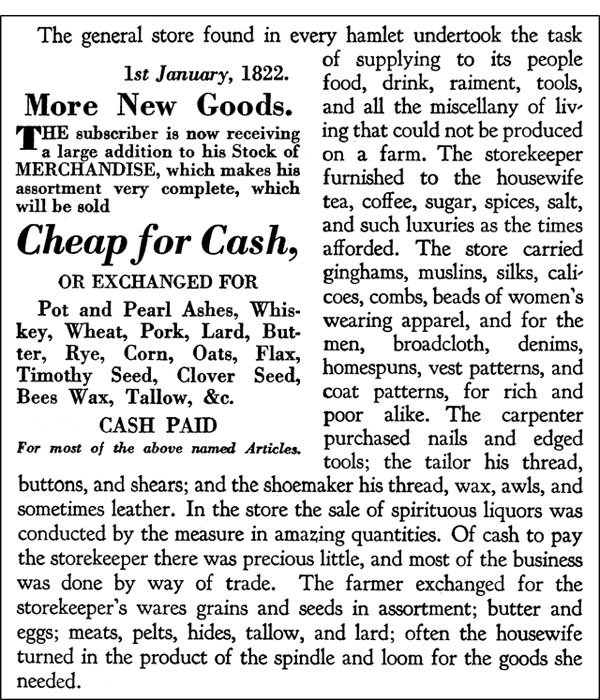
Figure 1. Goods that historically made up the bulk of
commercial trade in 19th century rural New York
By 1830 the New York canal system linked most agricultural depots of the state to waterways--the Great Lakes and lesser lakes like Lake Champlain and the Finger Lakes to the main state rivers--and thence to the population centers and to foreign trade. Figure 2 is an account of the primary commodities in the lake traffic through Buffalo in 1847 and provides a rough measure of the tonnage and kinds of foods that moved long distances in that era.[2]

Figure 2. Great Lakes traffic arriving at Buffalo, 1847
In the late 19th century the railroads took over most transport of farm products out of rural areas; even certain bulkier items that travel well like potatoes, onions, cabbage, and livestock were included in state-wide commerce and beyond.
Apart from food security, the stimulus to the local economy and the provision of fresh, superior quality food are good reasons to produce as much food locally as possible. But consideration of the above historical perspective suggests that the question of how much we need to depend on locally produced food turns on the ability of the state to promote the revival of the railroads or, failing that, at least the canal system. The existence of long-distance trade before the era of energy ascent in products like grain that travel well suggests that during energy descent widespread trade in some agricultural products will persist despite rising transport costs.
However, many energy descent analysts[3] believe that the US economy has been so undermined by internal and external debt and dependence on fossil fuels that state and federal institutions will eventually be unable to maintain the present social order, much less take on the reconstruction of pre-oil transportation networks. This scenario suggests the need for a high level of local food production. Analysis of probable futures at this macro-level clearly suffers from the uncertainty surrounding so many of the key variables. Perhaps the best insight one can draw from the records of earlier food systems is a ranking of agricultural products for localization, according to their sensitivity to a shrunken distance economy.
Even assuming the construction or restoration of energy-efficient transport networks, other concerns ultimately will force increasing dependence on locally grown food. A sustainable food system must recycle nutrients. The historical expansion of US food miles relied first on the depletion of fertile virgin soils, then on cheap fertilizer and other manufactured inputs. Without the crutch of increasingly expensive inputs, declining agricultural yields in farms distant from consumers will force large foodsheds to shrink over time. Even proposals for the reorganization of the national and global food system into bioregional systems or foodsheds larger than counties have ignored the nutrient cycling imperative, which becomes increasingly difficult as food is grown farther from where it is eaten. This raises the question of how to feed large cities in a purported Northeast foodshed and still sustain the health of the soil that grows the food.
As early as 1862, scientists were writing of a metabolic rift that had developed between city and countryside.[4] The rift was both biological and social; the nutrient cycle had broken as the nutrients that fed urbanites no longer returned to the rural lands where the food was grown, and urbanites had lost appreciation of the fact that urban prosperity ultimately depends on the health of the land and its natural systems.
The social/cultural rift may be the biggest obstacle to change. The very existence of cities depends on the accumulation of a surplus of wealth from agriculture and other raw material extraction from the land. The temporary ability of humanity to substitute fossil fuel dependent technologies for human labor and the soil fertility and other services originally supplied by natural systems created the illusion that human labor and ecological services are of little importance in agriculture, and therefore have little bearing on the question of the survival of cities. Technology, apparently an urban product, became paramount in the hierarchy of urban cultural values. In that hierarchy, technology could even replace the social capital of healthy families and communities that traditionally gave agrarian society much of its strength and resilience.
The county needs to be ready for these challenges. The limiting factor that inhibits food system change is not biophysical knowledge of how to do it, but social knowledge of the power structures that have closed down local food economies and prevented their revival. Successful strategies for change can emerge only from a deeper understanding of how things work in the system of power relations, both in the county and beyond.
A county policy framework that effectively favors local production and reverses the power shift in modern society toward centers that today exploit peripheries will ultimately improve local quality of life. In the early 19th century, before the rise of competition from the Midwest, agrarian NY communities sold to nearby cities and enjoyed a relative prosperity that reflects the true dependence of urban affluence on the wealth of the land. Recently it was estimated that in Maine, $10 a week spent on locally produced food would put $104 million into the state’s economy.[5] This suggests that a public program to relocalize the county food economy eventually could sell politically as a core element in regenerating the local economy overall.
Interdependencies in the county food system
The three types of county agriculture to be explored in this series are best suited to different, complementary roles in county food production. Taking its cue from the pattern in earlier times, urban agriculture will give priority to production of vegetables and fruits for fresh consumption that can be grown intensively, in raised beds for example. Peri-urban agriculture will supplement urban gardens with produce that requires more space, and will support some livestock. Rural agriculture will be responsible for most of the large animal production and large-scale field cropping. A high priority of farming in satellite villages will be to grow the bulk of the staples, like potatoes, oats, roots, brassicas, legumes, squash, alliums, and apples, which have proven to be dependable in cool, temperate climates. The county will need to rely mainly on outlying farms for non-food essentials as well, such as oilseeds, flax, hemp, wool, leather, and wood.
Because the agriculture of the future will need closed nutrient cycles, fertility for all county food production cannot be considered apart from county organic waste streams.[6] To maintain fertility, organic waste must return in some form to food production sites. As the dense urban population produces the bulk of the waste, public institutions will need to take responsibility for separate collection of the purely organic component of the urban garbage and sewage waste streams, recycling part of it back to rural farms.[7]
Fertility in urban and peripheral agricultural soils can be sustained with compost from the city organic garbage stream alone. A study of one urban community revealed that urban agriculture alone could absorb 20% of the organic waste production of the city.[8] This will require a municipal policy and program of careful triage, collection, and composting at optimum C/N ratio by mixing high-nitrogen food garbage with high-carbon sources like leaves and shredded paper trash. The city could assign responsibility to urban institutional sources, such as schools and restaurants for moving their large organic waste streams to composting facilities at specific peri-urban food production sites. A map of existing Tompkins County composting sites demonstrates the composting potential (Figure 3).[9]
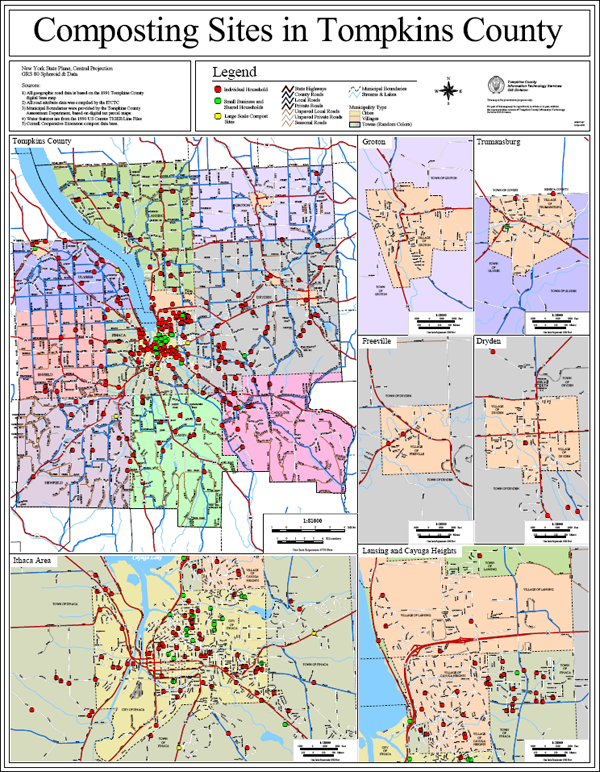
Figure 3. Composting sites in Tompkins County (click image for PDF version)
As for sewage, eventually Ithaca will have to desewer, converting to urban night soil collection, biogas extraction, and the recycling of residual organic matter to county farms that will be necessary to maintain the mineral content of rural agricultural soils. In the short run, guerilla humanure composting from backyard compost toilets can build toward full conversion (Figure 4). These household facilities are satisfactorily self-policed, because the product will be used in closed-cycle residential food production.
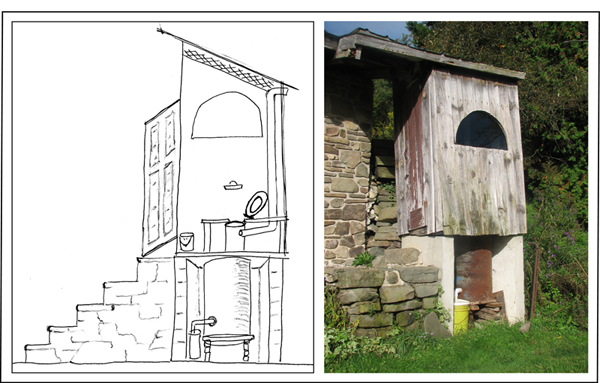
Figure 4. A functioning home-built composting toilet based on a
55 gallon drum that has been in operation in Cortland County since
1983. The drum is periodically rotated out through a composting
cycle
Conclusion
In this article, I have discussed the possibility that some of the current massive importation of the county’s food consumption could go on for decades. I pointed out serious risks to food security if this were allowed to continue, and argued that the distance economy in food causes metabolic rifts that make it ultimately unsustainable. I described in outline how a local food production system could mend the biological rift. Detailed visions of urban, peri-urban, and rural food production systems in the next articles will explain design solutions to the basic problems of fertility, energy, water supply, and pest control in specific cases of each type of production. And the reorganization of county agriculture itself will begin to address the most challenging rift, the social and cultural rift between urban and rural life.
Notes
[1] Hedrick, Ulysses Prentis. A History of Agriculture in the State of New York. Albany: New York State Agricultural Society, 1933.
[2] Ibid.
[3] Martenson, Chris. http://www.chrismartenson.com/crashcourse
Heinberg, Richard. Peak Everything: Waking Up to a Century
of Declines. Gabriola, BC : New Society Publishers, 2007.
Kunstler, James Howard. The Long Emergency. New York :
Atlantic Monthly Press, 2005.
[4] The earliest to apply the term metabolic rift to the “robbery” of country soils through the exportation of food to cities appears to have been the German chemist Justus von Liebig in the introduction to the seventh edition of his Organic Chemistry in its Application to Agriculture and Physiology. The term was later used by Karl Marx and others. See Foster, J.B., “Marx’s ecology in historical perspective,” http://pubs.socialistreviewindex.org.uk/isj96/foster.htm and Clausen, Rebecca, “Healing the Rift: Metabolic Restoration in Cuban Agriculture,” Monthly Review, May 2007.
[5] Community Food Security Coalition. “Urban Agriculture and Community Food Service in the United States: Farming from the City Center to the Urban Fringe.” FoodSecurity.org. October 2003. http://www.foodsecurity.org/PrimerCFSCUAC.pdf
[6] For information about local waste processing facilities, see the TCLocal article “Wasting in the Energy Descent: An Outline for the Future” by Tom Shelley, http://tclocal.org/2009/01/wasting_in_the_energy_descent.html
[7] Tom Shelley has recently begun to prototype this process with “The Sustainable Chicken Project,” which returns nutrients to the land by collecting kitchen scraps in the City of Ithaca on a subscription basis and feeding them to chickens at Steep Hollow Farm three miles outside the city in the Town of Ithaca. See http://www.sundancechannel.com/sunfiltered/2010/01/sustainable-chicken-project/ and the farm’s blog at http://steephollowfarm.wordpress.com/
[8]Mougeot, Luc J.A. Growing Better Cities: Urban Agriculture for Sustainable Development. Ottawa: International Development Centre, 2006. http://www.idrc.ca/openebooks/226-0/
[9] http://www.co.tompkins.ny.us/gis/maps/pdfs/CompostMap2000-E.pdf
by Karl North
In Part One of this series, I noted that providing for the local food needs of urban populations requires a design that integrates three overlapping categories of production systems: urban agriculture systems (many small islands of gardening in the city center), peri-urban agriculture (larger production areas on the immediate periphery), and rural agriculture (feeder farms associated with village-size population clusters in the hinterland of the city but close enough to be satellite hamlets). In this month’s article, I will discuss four key issues that must be addressed in order to envision these three systems: fertility, energy, water, and pest control. But first, a word about the role of species diversity in addressing these issues.
In an energy descent environment, agriculture that incorporates the necessary diversity of species that are multifunctional — providing both ecological and other services and food — will gradually replace the current agriculture that substitutes external inputs to solve these problems.
Some of the most durable and productive low input farming systems in history are designed around animals that can accelerate the growth and conversion of plants to fertilizer. Because they are highly multifunctional, ruminant mammals rank highest among these. Beyond their manure production function, they can consume fibrous perennials unusable for human food. These perennials can grow on hill land too rocky or too erodable for food cropping. Used as work animals, ruminants multiply the energy input from human labor many times. They provide a source of concentrated protein food that can be conserved and stockpiled for winter consumption. They provide hides and fiber for clothing as well. Cattle, sheep, goats, alpacas, llamas and bison are ruminants that we can most easily use in agricultural systems in our environment.
A few other animals serve some of these functions and, properly integrated, often are found enhancing these systems. Pigs and poultry can do the hard labor of turning manure into compost, and can thrive by consuming unused and pest species as well as waste streams from farms and kitchens. They both can reduce a patch of weeds to bare ground ready for planting, and pigs will perform tillage as well. They will consume crop residues and garbage from food preparation, and convert it to fertilizer as well as their own production as food animals. Poultry will consume weeds and insect pests. Edible fish and other water animals like frogs and snails can perform the same functions in aquatic systems. This map of flows among components demonstrates the potential of integrated systems (Figure 1). Notice that the flows may go in both directions among all components:
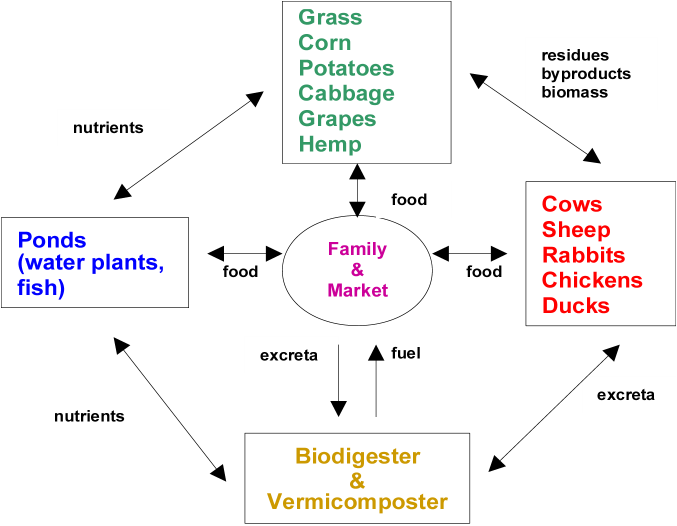
Figure 1. Dynamics of a hypothetical sustainable system
1. Soil Fertility
As energy descent deepens, two key fertility crutches of industrial agriculture will become cost-prohibitive. Synthetic nitrogen fertilizer production requires large quantities of energy. The decreasing quality of phosphate deposits is already driving up the price of phosphate fertilizer (up 700 percent in a recent 14-month period) and production is estimated to peak within 20 years.[1] Moreover, the affordability of most off-farm sources of fertility is derivative of cheap oil. But minerals essential to farm fertility can be recirculated within farms or at least within local food systems, and recirculation capacity will become essential to sustainable design.
On-farm recycling. Building high levels of soil organic matter (SOM) will be central to agroecosystem design because SOM is key to achieving not only fertility goals, but also healthy water and mineral cycles, maximal photosynthetic energy capture and use, and optimal biodiversity. Humid, temperate environment soils are exceptional in their ability to store organic matter. French scientist Andre Voisin demonstrated 50 years ago that pulsed grazing (explained below) on permanent pasture is the fastest soil organic matter building tool that farmers have, at least in temperate climates like ours.[2]
The structural element historically proven to work best in these environments is a grass/ruminant complex. This subsystem works on the principle that manure from a portion of the farm devoted to grazing animals will not only sustain the fertility of their forage land, but generate a surplus that will sustain a smaller acreage of annual crops (Figure 2). It can sustain fertility well enough to have generated numerous historical models around the world. The process was used in lowland northern Europe and New England before the industrial age.[3] Cuban research into its potential demonstrated the effective ratio of forage acreage to support cropland fertility to be 3:1 in that environment. In other words, the ruminant stock subsisting on three acres of forage produced enough manure to sustain both the fertility of the forage land and one acre of cropland. This conceptual model, adapted for environmental differences, provides a basis for system design here. Perhaps the most important design question for our purposes is the ratio of forage to cropland that is sustainable in our environment.
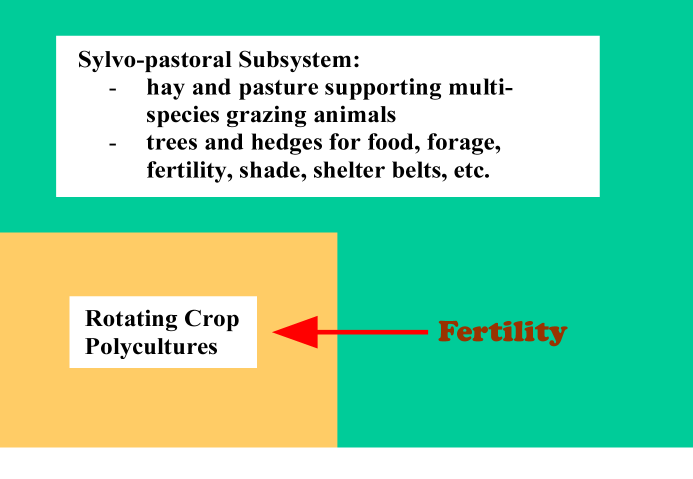
Figure 2. Fertility subsystem conceptual model
The full soil organic matter building process requires a design focus on three crucial areas of the agroecosystem:
Pasture management for a wide variety of productive, palatable perennial forages, kept in a vegetative state (high growth) by pulsed grazing (see below) throughout the growing season to maximize biomass production;
Manure storage in a deep litter bedding pack under cover during the cold season to maximize nutrient retention and livestock health;
Conversion of the bedding pack to compost at a proper C/N ratio during the warm season to maximize organic matter production, nutrient stabilization, and retention;
Field application of the compost during the warm season as well, to maximize efficient nutrient recycling to the soil.
Pulsed grazing is so important to the success of the soil building subsystem that it warrants an explanation in some detail. Pulsed grazing is a method of repeated grazing of paddocks in a pasture that controls stock density and timing of stock movement in and out of paddocks to maximize forage production over the growing season. This in turn maximizes manure production to build soil organic matter. Forage plants experience repeated pulses of growth and removal of biomass, both above and below ground, over the growing season. Key points :
Stock enter a paddock before forage leaves its vegetative stage and growth slows.
Stock leave a paddock while there is still sufficient forage leaf area to jump-start regrowth.
Grazing causes forage roots to die back, which adds soil organic matter from the dead root mass.
Stock return to the same paddock when leaf and root regrowth have fully recovered vigor and abiity to recover from another grazing.
Recycling from Human Communities. It should be clear from the integrated model (Figure 1) that solving the fertility problem must include repairing the broken nutrient cycle between human excreta and the land. If this seems an insurmountable challenge to modern urbanites, we need only recall from history that whole societies including large cities have managed excellent recycling of “night soil.” Among the numerous examples is China, where until the 1950s, 98% of the fertilizer used to grow food came from recycled and organic sources.[4] Relocalization of food production is necessary to reduce the cost of repairing the nutrient cycle. If Tompkins County exports milk products to NYC, what will it cost to return the nutrients in the exported milk to our farmland? In a more county-based food system, methods for recycling humanure and other food garbage that are appropriate to urban, peri-urban, and rural farming sites are more feasible, and will be discussed in the sections devoted to these production systems.
2. Energy Capture
Ancient sunlight in fast-depleting, finite sources (oil, gas, coal) presently supplies over 80% of the energy used in the industrial form of agriculture that produces most of the food consumed in the United States. Natural ecosystems consist of food chains supported entirely by current sunlight, so it is easy to design farming systems to work the same way, as was done through most of agricultural history. Solar energy that is accessible directly on farms comes in forms that are far less concentrated than the fossil fuels that we are used to. Therefore we need to design farms that can be productive on far less energy. The challenge is to capture solar energy in as many places as possible as it flows through the agroecosystem.
The carbon cycle is an important way solar energy flows through our world. All metabolic processes in agriculture and other biological systems release carbon to the atmosphere. Tillage that stimulates activity in the soil food web, animal and human digestion and composting are examples. But criticism of these processes as feeding greenhouse gas build-up is mistaken. Biomass conversion to food, fertilizer, or fuel is carbon-neutral over time because its emissions, unlike those of fossil fuels, are part of the biospheric carbon cycle. The important question here is how to manage the carbon cycle to maximize long-term levels of soil carbon sequestered as soil organic matter.
Animal Power. Currently (2009) people tend think of solar capture in terms of relatively high technologies like those that convert wind and sunlight to electricity. Working models exist of homesteads and even farms that are self-sufficient in electricity using small-scale equipment of this sort. However, most analyses of economic viability related to wind/solar electricity production at any scale are based on current costs in the manufacture and maintenance of these systems, all of which still rely on cheap oil. These analyses fail to account for already exponentially rising costs in raw materials and production of the equipment. All production costs of such technologies will rise in parallel with sharply increasing energy costs as the fossil fuel era declines. Like oil, many raw materials used in these technologies are finite resources already on the downside of their historical production curve; they will become unaffordable for many uses in the future. In sum, the window of opportunity that makes these alternative energy technologies approach economic viability now may close in the future as costs begin to rise more sharply. A 10kw wind-electric rig that can power a small farm costs about $70,000, and is usually economically unfeasible even today without subsidies. What will it cost after 15 years of rising manufacturing costs? What will it cost to replace it after its 20-30 year lifetime?
However, there are ways of powering farm production that are more reliably sustainable. Just as the same breeze or brook flowing through a community might be tapped at a number of points for wind or hydropower to run a mill or pump water, solar energy can be captured to produce food or fuel by inserting species appropriately into the farm food chain. Apart from wind and flowing water, solar energy enters the farm ecosystem via photosynthesis in green plants, and flows through the system as one species feeds on another. Large herbivores tap immediately into this chain by feeding on plants that are too fibrous for food use. While they may produce food and fertility as previously described, they will do double duty as work animals in the future, thus replacing no longer affordable fossil-fueled machine labor.
Fields that grow the forages that support work animals and other grazing and foraging species will not compete with cropland. On the contrary, forage fields will provide an essential ecological service as the permanent cover necessary to sustain soil health on all sloping land. Present hillside cropland is always eroding and will be revealed as unsustainable when the crutch of cheap synthetic fertilizer is no longer available. This means that land use plans in hill country like ours will need to include a mosaic of hillside forage land and relatively flat cropland. Unless terraced, the hillsides will be most erosion-free and productive when planned to mimic natural tree-dotted savannas, as hay/pasture that includes fruit and nut orchards, for example. The trees themselves will be multi-functional, producing food or forage, improving the cycling of soil nutrients, providing windbreaks, and shading the grazing animals.[5]
Integrated as described here, draft animals like oxen, mules, and horses will optimize the health and productivity of the agroecosystem.
Biofuels. Energy for winter heating and for cooking is almost as important as food production for survival in these latitudes. As much as possible of that energy should come directly from the sun, as in passive solar designs for both heating and cooking. But rural land use will need to reflect increasing local dependence on firewood for the rest. Sustainable forest management and harvest will again become a significant share of rural agricultural production, but serving local urban and village communities not faraway paper mills. Forest conservation and reforestation should start with places that need to be forested for additional reasons, like ridge tops that protect water catchments, and hedgerows that serve as shelterbelts and browse for livestock.
Production of most other biofuels at any significant scale has been criticized as unsustainable on many counts. One that may prove sustainable is small-scale biogas generation on farms, because it extracts methane from some of the farm’s normal manure production before it continues in the farm’s nutrient cycling loop, as in Figure 1. Most attempts at biogas generation on US farms have been large-scale, high-technology projects aimed at fixing the pollution problem caused by industrial scale dairy farming. So far, farmer adoption of the expensive and complex equipment has been poor, despite subsidies. Meanwhile, small scale biogas generators aimed at producing light and cooking fuel in Third World peasant communities have proliferated, because they cost as little as $30.[6] Biogas production requires no separate biofuel crop that might compete with food production, or inefficient distillation process. For these reasons biogas production at an appropriate scale merits consideration as a way of capturing solar energy as methane fuel for limited use on farms and perhaps even surrounding communities.
3. Water Capture and Use
We live in a climate that is wet yet subject to droughts during the growing season. High productivity food production requires a constant water supply to cover these gaps. Maximizing productivity in the small areas devoted to urban agriculture is especially important, because of their high value in a relocalized food system. Sufficient water falls on urban areas and needs to be conserved there. Barrels can catch only a fraction of roof runoff, and will not be enough for the irrigation needs of a successful urban and peri- urban agriculture. Small water catchment ponds must become a normal part of both the public and residential urban landscape. Pavement runoff will need to be directed to the larger ponds, which might be located in parks and community gardens.
Rural agriculture will need more extensive water capture plans to hold and use water for farms and whole watersheds. Such a system should be gravity feed system, in order to avoid the increasingly high cost of pumping. An example is the keyline plan that traps some surface water in upper fields and directs the excess into strategically located irrigation ponds.[7]
Our irrigation needs in New York may be intermittent but still will require a lot of pipe and other delivery hardware when scaled up to cover all food production land. Rising costs of current irrigation delivery systems may become a limiting factor, forcing the invention of ones that use cheaper materials. This has been the experience in Cuba, whose year-round agriculture is heavily dependent on irrigation. Cuba’s artificially triggered “peak oil” experience has been a bellwether and a source of lessons for the rest of the world.
Ponds will be needed to serve numerous purposes, as in Figure 1. Basins to process biodigester outflow and other organic liquid waste can grow algae and duckweed for animal feed, and then feed the cleansed water into ponds for fish and other aquaculture, as in Figure 3. They will attract aquatic life including species useful for garden pest control, and enhance human quality of life as they beautify places and improve microclimates.
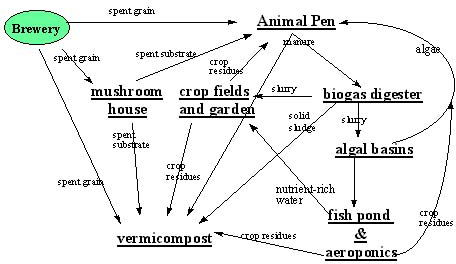
Figure 3. Facilities for bioconversion using the UNU/IAS integrated biosystem at Montfort Boys Town, Suva, Fiji
Wetlands abound in New York and are among the most productive natural ecosystems. Because of their natural potential, they can be harnessed for highly productive agricultural use yet be managed to retain much of their natural function. Historical and contemporary models include wetland systems that fed older civilizations from the Aztecs to the Incas in Latin America, as well as many parts of Southeast Asia today. Typically, as in the Aztecan systems known as chinampas, farmers cut canals through the wetland and use the soil to create beds raised above the water level for agricultural use. The canal system is designed to allow the water control that keeps the raised beds well watered without being subject to undesirable flooding. Because of the ubiquitous water, these wetlands are highly productive as both agricultural and aquacultural systems. They produce so much biomass that they tend to maintain their own fertility, dredged from the decomposing detritus in canal bottoms.
One such wetland, adapted from lowland English agriculture, became the core of a highly sustainable agricultural system that supported the population of colonial Concord, Massachusetts for many generations.[8] The Great Meadow that traversed the village and all other nearby riverine flood plains was a swamp commons that was first flooded to deposit silt, then partly drained and reserved for pasture and hay as it dried out during the growing season. As in parts of Europe, these well-watered riverine meadows produced enough livestock feed, livestock, and manure to sustain the fertility of the adjacent dry lands devoted to tillage agriculture. Figure 4 shows that already by 1650 careful allocation of land use had taken place on a functional level to sustain the whole system. Historical models like these suggest that we will want to regard modified wetlands as an important agricultural asset in the energy descent era.
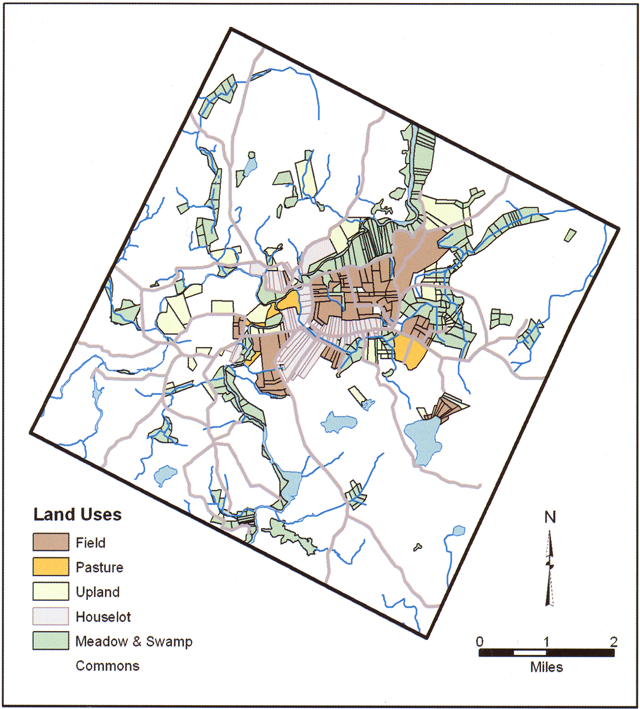
Figure 4. Concord, Massachusetts, 1652. From The Great Meadow: Farmers and the Land in Colonial Concord.
4. Pest Control
From a systems perspective, pest problems are “structural,” hence best addressed by system design rather than treatment with pesticides. In this section I will summarize two main strategies addressed in order of importance: a focus on the food species themselves, and then the layout of the physical and biological environment as it affects these food species.
Much as health care in humans requires preventive medicine, we must grow healthy plant and animal species as a first step in pest control. A primary structural problem is the genetic industrialization of most agricultural plant and animal species, which was gradually achieved in modern times by breeding processes that prioritized productivity and short-term profit over other genetic traits, like hardiness. Moreover, relying on pesticides, even “natural” ones, to protect these weakened subspecies inevitably fails over time because pests gradually adapt to conditions and treatments that become heavy- handed and routine. An example is parasite resistance in sheep, which has been neglected and lost. The resulting industrial breeds must be medicated so often that the parasites are gradually becoming immune to most medications. To be sustainable, food production systems will need to return to varieties and breeds that, while sometimes less productive, have more genetic defenses. By genetic selection farmers can rebuild hardiness in industrial breeds as well.
The design of alternative environments uses three general strategies of pest control: luring or driving them away with trap or repellent species or physical barriers; creating species and habitats that attract “beneficials,” species that prey on pests; and continually altering the environment with crop and animal rotations that shift them away from pests.
This last strategy points up a characteristic of the natural world that needs to be taken into account: it is always evolving. In the long run this means that pest control strategies can never be permanent, but must always be evolving to stay a step ahead of pests as the latter adapt to current controls. The downfall of industrial pest controls is their heavy- handed strategy of total pest elimination and routine medication. Ironically this creates the environments most conducive to genetic evolution in pest organisms toward immunity from controls.
Recourse to medicinals and other treatments is a strategy of last resort, indicating a design failure in the production system, which must be addressed.
Conclusion
From the foregoing it seems clear that life after fossil fuels will demand much reorganization of food production. To create a local agriculture that feeds the county, the map of rural and urban land use will change dramatically. In the countryside, wetlands and floodplains, hillsides, flatlands, and woodlands will have specific uses designed to maximize while sustaining the productivity of whole agroecosystems. Essential rural land use components might be:
Hillsides in forage land sufficient to support cropland fertility.
Flatlands in crop rotations.
Wetlands and floodplains development and water management for high forage or crop production.
Sufficient forest for county firewood and basic construction needs, managed for maximum regenerative capacity, which requires fencing out livestock. Woodland regenerative capacity equaling 1 cord/acre/year is a common rule of thumb.
Many uses of city land will no longer be economical in the coming years. Land will need to be converted to food production and its supporting functions, like composting and water conservation. Prime candidates for conversion are the commercial strips now inhabited by national corporate chain stores. Private and public parking lots, which energy descent writer William Kunstler sees as soon-to-be-dysfunctional “missing teeth in the urban fabric,” are another example. During Cuba’s artificially triggered encounter with “peak oil,” public interest dictated that a better use of resources was to raze ageing buildings to create urban garden space, rather than to restore them.
In the integrated system approach described here, the functions of plants and animals will undergo marked changes. The functions of many species to facilitate tight nutrient cycling, labor, and other services that underpin the health of the whole agroecosystem, will become more important. In the case of some animals, these functions will become primary, and food production will become a secondary function, with numbers of animals on farms directed to their primary functions. The result will be a general production system model that aims for maximum sustainability, remains within the carrying capacity of the natural resource base, and within that framework, feeds the maximum number of people per acre of land used.
Notes
[1] Peak Phosphorus: The Sequel to Peak Oil http://phosphorusfutures.net/index.php?option=com_content&task=view&id=16&Itemid=30
[2] Voisin, André. Grass Productivity, 1959 (English translation in 1988). Island Publishers, Washington, D.C., U.S.A.
[3] Donahue, Brian. 2004. The Great Meadow: Farmers and the Land in Colonial Concord. New Haven:Yale University Press.
[4] http://www.fairviewgardens.org/pub_next_frontier.html
[5] North, Karl. 2008. Optimizing Nutrient Cycles with Trees in Pasture Fields. LEISA Magazine, 24 (2), March 2008. http://www.ileia.org/index.php?url=magazine-list.tpl&p[source]=ILEIA
[6] Preston, T.R. 2005. Biodigesters in Ecological Farming Systems. LEISA Magazine, 21 (1), March 2005. Also: http://www.ruralcostarica.com/biodigester.html
[7] http://www.keyline.com.au/ad1ans.htm
[8] Donahue, op. cit.
by Karl North
Editor’s Note: This article is the first in a three-part series. Part 2 will appear next month.
In this paper I will attempt a preliminary vision of a relocalization of food production designed to feed the population of Tompkins County. A project of this scope implies a reorganization of food processing and distribution that, while not included in this first iteration, will need to be integrated in a later, expanded overview.
My purpose is to explore the kind of local food system that will be needed as this country faces sharply lower access to the energy sources on which our present industrial form of agriculture and food economy heavily depends. I will describe the types of local farming enterprises, farming methods, resources, and land use needed to confront a future of much lower energy use. A documented baseline assessment of current food production and county resources is not an objective of this essay, but will be essential to a detailed planning effort. The picture presented here is intended to be general enough to be useful in planning the relocalization of foodsheds that include an urban center the size of Ithaca, New York.
In these first few pages, I will set out my premises and theoretical points of departure in some detail to explain the fundamental changes in perspective I think are necessary to envision how and where we produce food in the future.
This vision will rely on several critical premises:
The premise underlying all work of TCLocal is that a permanent decline in the availability and affordability of liquid fuels and related rising costs of all energy sources will inevitably lead to much lower energy use and increasing importance of local scale in human affairs. The present long-distance food economy will shrink, and consumers will need to rely increasingly on local food production.
This “energy descent” will force the transformation of food production toward low external input systems that rely more on human labor and models of healthy, highly productive ecosystem processes common in nature instead of the high energy cost technological substitutes on which agriculture, including most of organic agriculture, depends today.
Our world is systemic in nature (parts are more or less connected), and this has important implications for attempts to change it. Problems we want to solve are, as the system analysts like to say, “structural,” and require intervention in several places. So the single-issue approach to any kind of change is eventually bound to fail to meet expectations. For example, dieting to solve weight problems never works for long if the problem lies in the structure of our life. In addition to changing what we eat, maybe trading the car in on a bike and some tools to dig the lawn into a vegetable garden would produce better results.
Moreover, despite best intentions, in a systemic world we can never make just the one change we aim for. Complex systems are squishy like a balloon: squeezing just one end only makes the balloon blow out in other unexpected places. Change agents need a holistic approach that recognizes that consequences of any interventions are multiple ripple effects that go distant in space and time. This approach has important implications for design at every level of scale.
At the garden or farm scale we want to build in multifunctionality, where parts of the system serve more than one purpose. Plants and animals that provide food, for example, may also provide ecological services necessary for the health and productivity of the whole. Ecological services are the benefits arising from the functioning of the ecosystem, in contrast to purchased inputs.
At the level of the food system, where different elements of production, processing, and distribution can be designed as a cooperating whole, we need to build in complementarity as to what is produced, and services that are shared among the different types of production units to be described in this paper. Urban gardens may best serve the county food system by growing fresh produce, thus complementing rural farms that produce less perishable foods, for example.
At the community level, we need to view the reorganization of the food system as affecting and affected by the reorganization of all other infrastructure and institutions impacted by reduced energy availability, e.g., industry, housing, markets, transportation, sanitation, information flow, knowledge production, etc.
Most important from a systems perspective, we need to regard far-reaching changes like those to be proposed here as experimental, and track for unintended consequences in time and space. This approach, known to ecologists and other systems thinkers as adaptive management, requires constant monitoring and replanning in the face of uncertainty about consequences.
The design of a relocalized agricultural system will need to address root causes. For example, the proximate causes of flooding may be failed riparian buffers and levees, but the root causes are pavement, bare ground, and other surfaces that create surface run-off, soils compacted and depleted of water-holding organic matter, agricultural field drains, and channeling that cuts streams and rivers off from their historic flood plains. Attention to root causes forces the need for the systems perspective outlined in premise #3. If, from the viewpoint of sustainability, high-input, oil-dependent agriculture is now revealed to be a design failure from the outset, little is gained by piecemeal solutions like replacing chemical inputs with “natural” ones. Rather than the input substitution approach, efforts are better directed toward whole agroecosystem design that integrates a diversity of spatial and temporal elements.
Understanding Sustainability. In addition to working from the stated premises, I want to ground the proposals in this visionary project in a working concept of sustainability based on ecological science. This is important at this historical juncture for a couple of reasons. The common practice of confusing and conflating sustainable agriculture and organic agriculture will be counterproductive in the coming era when shrinking access to cheap energy will reveal the unsustainability of most current forms of agriculture, including organic. The flowering of the organic farming movement, in which I have been a practitioner for 30 years, generated much innovation that will be useful in coming years. But it also produced the delusion of a luxury version of sustainability, because it occurred in and was shaped by an era of cheap oil. Limited by economic forces and a focus mainly on environmental issues, organic farming became more a matter of substituting “greener” inputs for those of industrial agriculture rather than seeking input independence through systematic redesign. Awareness that many of the “greener” inputs depend on fast-depleting, often finite, soon-to-become-expensive resources still has not penetrated the organic movement sufficiently to become a paramount concern. A common practice in organic vegetable farming, for example, is to import fertility in the form of compost from factory-style dairy and poultry farms.
None of the above should be construed as an attack on the organic farming movement, or a dismissal of its contributions to the development of a truly sustainable agriculture. But we need a more rigorous design tool than “organic” to select from those offerings.
Sustainability means that local food production systems must support the food and fiber needs of a given human population without exceeding their carrying capacity (CC). A working definition of CC might be the maximum indefinitely supportable ecological load of an ecosystem or area.
We must be clear about what constitutes a supportable ecological load. Depletion of a finite resource like copper or phosphorus is not supportable unless we find a way to perfectly recycle as much of it as is needed (not downcycle it as in plastic bags --> park benches --> landfill). Petroleum products used for fuel are not recyclable, and anything needing those fuels in its production is therefore unsustainable. The supportable load on renewable resources on which we depend is limited to their refresh rate. The rate at which a farm consumes soil organic matter depends on the capacity of the agroecosystem to rebuild it. Less evident, but perhaps ultimately most important,is the load of work we place on natural systems to absorb concentrations of substances and handle imbalances that we create. That load can become insupportable, either because it becomes too great or because we weaken the ability of natural systems to do the work.
In short, the success and survival of all human activity rests on and must be subordinate to the continuing health of the natural resource base and the ecosystems that underpin it. Encapsulated in the phrase, “Mother nature bats last,” this means that any sacrifice of ecological health to advance human affairs eventually results in losses to society. Economic profit gained in the short term at the expense of the natural resource base and its health leads inevitably to economic loss in the long term.
The CC of a specific farm or regional landscape at a given historical moment may have eroded far below its potential. Industrial agriculture has indeed damaged the CC of much of the agricultural resource base. At present, technological props based on cheap oil have created a temporary, artificially higher CC that ecologist William Catton called “phantom carrying capacity.”[1] Continued belief in this phantom can prolong the overshoot and erosion of real CC long enough to cause the population to collapse. Our present food system is operating at phantom CC. This is due to a level of agricultural productivity that is temporarily and artificially high because it relies on fossil fuels and other raw materials that are finite and fast depleting. Over 80 per cent of the energy on which our food system runs comes from oil. In practical terms this means that we are feeding more people than is sustainable (at least on a global basis), because human populations have ballooned in response to rising food production. Equitable food distribution is an essential response to the problem but is ultimately insufficient unless agriculture itself can be organized on a sustainable basis.
On the other hand, human intervention can often rebuild CC and possibly improve it somewhat. Effective agroecosystem design can improve farm sustainability, for example, by building in sufficient species diversity to provide necessary farm inputs and ecological services “for free” to replace unsustainable external inputs to farms.
Finally, “needs of a given human population” is a slippery term, the definition of which varies widely from one culture to another. We need to ask: How much material consumption does our quality of life really require? In regard to food, does discretionary consumption exist which, if reduced, could allow agriculture to feed more people?
Despite the complexity of these questions, thinking about sustainable design to respect carrying capacity has effectively focused the attention of ecological scientists on maximizing the long-term health of four interrelated ecosystem processes in agroecosystems:
The mineral or nutrient cycle
The water cycle
The energy flow
The structure and interactions of the biological community
A focus on these four processes leads to the development of principles or attributes of sustainable agroecosystem design intended to maintain, or in many cases regenerate, the health of these ecosystem processes. Some of the widely accepted principles and their implications are:
Low external inputs — Input self-sufficiency.
Low emissions — Closed nutrient and carbon cycles that avoid losses of valuable resources that eventually cause environmental damage.
Stability – Resilience – Adaptive Capacity — These qualities of sustainability are all necessary, but since they exist somewhat in tension, there must be balance among them. Stability is the quality that produces reliable results and minimizes risk, but in excess, stability can become rigidity. However, a certain flexibility is required for resilience, which is the ability to rebound from sudden change like a dry period in the farming season. Adaptive capacity to respond to slower changes like a gradually invasive plant disease also requires flexibility. Reserves of material or energy, overlaps, redundancy, or other slack in a system provide that flexibility, but at the price of efficient use of resources.
Knowledge intensity — Reliance on technologies that are powerful but derivative of a narrow, specialist knowledge base will give way to a broader, more demanding knowledge of farms as complex ecosystems of interdependent species, a knowledge that enables the creation of biodiversity to capture synergies, to biologically control pests, for example.
Management intensity — Farming for input self-sufficiency and low emissions will require more labor devoted to management planning and monitoring to replace other resources or use them more efficiently to maximize sustainable yield: productivity per acre.
Local food self-sufficiency and national food sovereignty
These principles fit well with the design imperatives of a future marked by gradual loss of sources of cheap energy. Aimed at maximizing the ecosystem processes described before, these design principles will guide the visioning effort.
The visioning process will draw on several main resource areas:
Known principles of agroecology and their relation to the concept of sustainability as outlined above;
Historical knowledge of how production was achieved before the era of cheap energy and other inputs — as late as the early 20th century in some locations;
Subsistence and semi-subsistence farming systems in agrarian communities on the periphery of the global industrial economy, which have managed to escape the imprint of the current system;[2]
Contemporary models of large-scale conversion from industrial agricultural systems to localized, low input agricultural systems as in Cuba,[3] the resources of the Permaculture[4] and Transition Towns[5] movements, and some of the more sustainable design efforts to develop very low external input systems in the organic agriculture movement.
From these resources I will attempt to extract and introduce a set of general food production system design strategies that follow principles already outlined above. Many of their elements have in common the goal of designing for food and other species that are multifunctional, delivering ecological services presently provided by the external inputs in our industrialized food system that will become prohibitively expensive in the future. Elements of these food system design strategies include:
Integration of crops and livestock
Animal, human- and small-scale wind, hydro, and solar as the primary energy sources of agricultural production
Perennial crop polycultures, in particular,perennial carbohydrate crops(nutritionally, hazelnuts can be seen as equivalent to soy, chestnuts as an equivalent to corn)
Perennial forage polycultures under intensive management (variations on an interdependent triad: grasses for bulk, legumes for nitrogen, deep-rooted broad-leaf forbs for minerals)
Agroforestry and sylvopastoralism
Alley cropping/grazing within perennial polycultures
Terracing, or return of perennials to erodable slopes
Intensive water management: capture and distribution swales, rooftop capture, microclimate creation, ponds and filter wetlands for storage, nutrient processing and aqua-ecosystem development
Extended growing season and harvest technologies
Intensive nutrient management
Repairing and tightening broken and leaky nutrient cycles: food = waste = food
Rotations that manage nutrient capture and use
Intensive bed growing
Biocontrol of pests: pest predator production and habitats, trap crops
Plant families designed for symbiosis
Stacked species for sunlight capture or shade or wind protection: vertical plant growth — vine crop fences, espalier
Cooperative management: neighborhood and community gardens, revival of the commons
Historical models of energy-efficient foodsheds that include an urban population suggest the need to design a whole that integrates three somewhat overlapping categories of production systems:
Urban agriculture — many small islands of gardening in the dense city center
Peri-urban agriculture — larger production areas in the immediate periphery
Rural agriculture — feeder farms associated with village-size population clusters in the hinterland of the city but close enough to be satellite hamlets
The design of each type of system will vary depending on its available resources, its appropriate role in feeding the county population, and its input support function for the other production categories. In parts two and three of this paper I will describe some general sustainable design considerations, and then build on them to offer a vision of each of these three food production systems. My effort is intended to build on earlier TCLocal articles relating to land use and food production.[6]
It bears pointing out that the reintegration needed to transform
our food system will force the solution to some of our society’s worst problems. In addition to better food quality, the reduction of agricultural and other pollutants, and an increase in food security, the changes required for truly sustainable food production will rebuild community and begin to mend what Engels and Marx called the “metabolic rifts” in both our farms (e.g., broken nutrient cycles) and our communities (e.g., the broken connection between city and country, man and nature). These systems thinkers saw that the notion of metabolism that in biology refers to chemical processes and transactions essential to maintain life has its counterpart in ecosystems and social systems.NOTES
[1] Catton, William R. Jr. Overshoot: The Ecological Basis of Revolutionary Change. Urbana and Chicago: University of Illinois Press, 1982.
[2] Bennholdt-Thomsen, Veronika, and Maria Mies. The Subsistence Perspective: Beyond the Globalized Economy. London: Zed Books, 1999.
[3] Funes, Fernando et al. Sustainable Agriculture and Resistance: Transforming Food Production in Cuba. Oakland: Food First Books, 2002.
[4] Mollison, Bill. 1997. Permaculture: A Designer’s Handbook. Tyalgum, Australia: Tagari Publications, 1997. Examples: http://www.youtube.com/watch?v=Bw7mQZHfFVE&NR=1
[5] Hopkins, Rob. 2008. The Transition Handbook. White River, Vermont: Chelsea Green Publishing, 2008.
[6] For a list, see the TCLocal archives (http://tclocal.org/archives.html).
by Persephone Doliner
What Is Processed Food?
To process food is to make parts of plants and animals more edible than they would be in their unprocessed state. Manufactured products containing lots of chemicals and sweeteners, a class of processed foods, have given all processed foods a bad name. Other, more basic foods are also processed: all food made of grain; milk, butter, cheese, and meats; plant-based meat substitutes (tofu, seitan, etc.); dried and canned fruit and vegetables; all fermented foods; oils, syrups, even honey. Although all cooking is food processing too, in this article, food processing refers to the many other ways of transforming plants and animals into human food: (1) techniques that get food ready to be cooked (e.g., cleaning and hulling grain, butchering animals), and (2) techniques that preserve food, retarding spoilage for periods ranging from a few weeks to many years (e.g., making cheese, canning).
Who Needs Processed Food?
Most of us. Your diet probably has a large processed component. Diet variety depends on eating some processed foods. Otherwise food choices would be limited to what could be raised, hunted, or foraged and eaten as is. In a sense, processed food is civilized food.
If you live in Tompkins County, eating locally raised foods year round requires eating stored or preserved foods, since the local growing season ends with the cold weather. And of course the universal need to eat processed foods such as grains and dairy products applies in Tompkins. Overall, processed foods are an important part of the local food supply.
Technique and Scale
A few words about two key dimensions of food processing are in order, before discussion of its role in Tompkins under energy descent conditions. The two key dimensions are technique and scale, both of which take many different forms when people process food.
Here is a list of 21 generic, common techniques used to process food: baking, brewing, butchering, cleaning, confit, culturing, curing, drying, fermenting, freezing, grinding, heating, hulling, milling, pressing, pickling, refining, salting, smoking, sterilizing, sugaring, vacuum packing. In general, each of these food processing techniques is used for more than one type of food. The equipment needed to carry out a technique is usually specific to a food type, however. For instance, fruit and seeds are both pressed to extract juice or oil, but the equipment needed is not interchangeable. Grain for beer and cucumbers for pickles are both fermented, but the procedures and set-ups used in the two cases are quite different.
Like technique, the scale at which food processing can be done also varies widely. The same technique can be applied in a home kitchen, a small commercial facility, or a huge factory. The procedures used at these three different levels may not be the same, and the equipment certainly won’t be the same at the different scales. The machines that process our current commercial food supply differ in design from those used in a small-scale operation, and those in turn differ from the tools you might use in your kitchen. For example, in large-scale commercial flour production, grain is crushed under rollers; in small-scale commercial production, it is ground in mills using large stones; at home you can use a machine about the size of an automatic coffee maker that grinds using metal or little stones.
A few modern techniques are strictly industrial processes (e.g., aseptic packaging, which relies on heating to very high temperatures and complex packaging). All types of food can, however, be processed and preserved in some way at all of the different scales. All foods can be processed in a home kitchen as effectively as they can be processed in a small or large factory.
Processed Food Supply under Energy Descent
Most of the processed food that Tompkins County currently consumes comes from elsewhere. There is little commercial food processing in the county. There are no large factories processing food, and only a few small operations. At the other end of the scale, home food processing appears to have recently gained in popularity, yet most households in the county don’t do any.
Large-scale commercial food processing is highly centralized. For instance, over 90 percent of the canned tomato products consumed in the U.S. come from California. Centralized food processing depends on agriculture conducted on a very large scale as the source of the food to be processed, on industrial production and storage, and on nationwide distribution, largely via trucking. If energy descent deprives this food processing system of the sources and practices it relies on, it may become less productive or even fail. Products will become scarcer and more expensive and may vanish. Tompkins County will have unmet processed food needs, and a need to supply itself with more of the processed food it consumes .
What would a working local food processing system look like? Under conditions of energy descent, could small-scale operations supply enough processed food to feed TC? Many unknowables (how much food can be grown, how many people need to be fed, how many people are available to work, what equipment can be maintained, how it can be powered, and what shape is society in) come into play; answers are not within grasp here. Even if the answer to the overarching question posed above (Could Tompkins adequately supply itself with processed foods?) is ultimately no, food processed locally will increase the county’s food supply under energy descent. More is better.
Given future uncertainty, the rest of this article mostly concerns the effects of conditions as they exist today on local food processing. What local conditions promote growth? What conditions retard it?
What Processed Foods Are Needed Most?
The county would need to grow more food and different food than it does now if it were trying to supply itself with processed foods. Most of the human food produced here is fruit and vegetables that are eaten fresh and unprocessed. Some grain, beans, and meat are raised in the county, and contiguous counties produce substantially more. Yet flour, cleaned grains, pasta, packaged baked goods, milk, cheese, meats, plant-based meat substitutes, and fats and oils all mostly come from outside the county and the wider local area. These processed foods are the staples of most diets; without them, people are hungry. If county residents seek to supply themselves with processed food, they need to produce these kinds of food. Processed fruits and vegetables are important but not vital, as they can be replaced by stored raw fruits and vegetables. If local food processing is to fill gaps left by the withdrawal of out-of-area food, its focus must be on processing grain, beans, nuts, seeds, meat, and dairy to produce staples.
Can Tompkins sustainably grow enough food to supply itself with foods to process? Another big question, again beyond the scope of this article. One aspect of the issue that can be discussed a little here is the relationship between production and processing.
The Chicken/Egg Conundrum for Growing and Processing
Growth in local food production and growth in food processing should go hand in hand, each promoting the other. A home jam maker wants to make strawberry jam for himself and his friends; he spends $30 on berries at a local U-pick, supporting their business. An artisanal (i.e., small-scale commercial) jam maker needs fruit; she buys the output of a half-acre each of blueberries, raspberries, and strawberries, supporting local agriculture on a larger scale. The big glitch in this picture of simple mutual reinforcement between production and processing is the chicken/egg problem: Which comes first? Dedicating farm resources to a particular crop for a processor is a major decision for a farmer. And, like a farm, starting and maintaining a commercial food processing operation takes heaps of money, knowledge, time, skill, siting, and equipment. Who is going to invest in, say, a commercial oil press to make sunflower seed oil if the supply of sunflowers is not at hand? But who is going to grow sunflowers in the amounts needed to supply an oil producer if the press isn’t up and running and begging for seeds?
Processing food at home does not suffer much from the chicken/egg problem. It’s not too hard to get started; techniques for preserving fruit and some vegetables at home are easy to learn and do not require specialized tools. Other vegetable and fruit methods a household can use, and techniques for processing grain, nuts and seeds, dairy products, and meats call for special equipment and more advanced skills — but nothing on the level of a professional investment in learning, plant, and equipment. In parallel, the potential contribution of home food processing to boosting the demand for locally farmed foods is also far smaller than the contribution that a commercial enterprise might make. But widespread home food processing in the county would still increase demand for locally raised food, perhaps significantly.
The producer-processor relationship is more complex for the staple foods than for fruits and vegetables. Generally speaking, this is because the staple foods need to undergo multiple types of processing before they can be eaten. Stalks of grain-bearing plants like wheat, oats, and barley do not go directly from field to oven, for instance. They need to be threshed, cleaned, hulled, and milled. Without facilities in place to handle these steps, grain isn’t usable. So neither consumers nor small-scale commercial processors can buy directly from farmers.
The Cost of Doing Business
As noted above, setting up commercial food processing operations takes money, knowledge, skill, and equipment. The last three elements are technique-specific; a miller doesn’t need the same knowledge as a butcher, or the same tools. Deciding what methods and machines to use in commercial processing is not straightforward even once a potential processor is well-informed and funded. Say you want to clean and hull grain commercially. You have about a dozen different grain cleaners to choose from. You have a range of choices in hullers too; a small impact huller will cost you about $15,000; the next step up in size and efficiency, about $23,000.
Food processing needs specialized, well-equipped facilities, too, and these need to be licensed. (Licensing is discussed more below.)
Storage of foods to be processed and of finished products also takes substantial resources: clean, dedicated, appropriately designed space; temperature control; and insect and rodent control are some needs. Other elements of a commercial food business are distribution and marketing; even at a small scale of commercial food processing, some staff needs to work exclusively on these.
Fossil Fuel Dependence
As with industrial scale food processing, everything that goes into small-scale commercial food processing as it is practiced today — agriculture, tools, equipment, facilities, and production, storage, and distribution — uses fossil fuels. Scarcer energy may make the methods and machines that are best to use now unusable in the future. At the very least, planning for such a transition is yet another consideration for a new food processing enterprise.
Legal Considerations for Commercial Food Processing
Laws governing food processing are numerous; they are (appropriately) different for different foods; and they exist at various levels of government (e.g., county, federal). No processed food product can be legally sold to the public without government licensing of (at least) the place and methods of production. The facility license and the product license are separate, and each is managed by different authorities. Generally speaking, in Tompkins the county regulates facilities, and the state regulates products. If you wanted to produce tomato sauce to sell, for example, you would need to go to the county health department for a license for your facility, and you would need to go to the state for your license to produce tomato sauce. For the latter, you would obtain a “20C” processing license by submitting and testing your recipe. For some foods, wholesaling to stores requires a higher level of licensing — a federal license rather than a state one, for instance — than direct selling to the public.
Just as processing grains, dairy, fats, and meats is more complicated than processing fruits and vegetables, regulations surrounding production of these staple products is more complicated, and licensing generally involves federal agencies in addition to local and state ones.
In general, the regulations governing processed foods tend to favor production on a large scale and to discourage small-scale enterprises. Conforming with regulations may simply require investments in plant and equipment too large for new entrepreneurs. Inattention and confusion at regulatory agencies can also pose problems. A fully equipped and ready-to-go small meat packer, for instance, may be unable to get a license to operate because it cannot get an appointment to be inspected.
Two more legal considerations food processors must address are zoning and product liability. Zoning limits where food processing facilities can be sited. Product liability limits where and whether products can be sold. Commercial food processors need insurance to sell legally.
Local Commercial Food Processing in the Big Picture
The existing international food supply and processing system discourages new local food processing enterprises. Processed food (even the “good” kind) is cheap and abundant under current conditions of fossil fuel-supported agriculture, food manufacturing, distribution, and marketing. Food produced and processed locally on a small commercial scale usually costs more than food produced on an industrial scale. Local food processing enterprises won’t succeed if people don’t buy the products, so they won’t start up if a viable business looks unlikely. It’s another chicken/egg conundrum: Which comes first, the need for locally processed food, or the production of that food?
Some aspects of energy descent may favor local food processing. If products from far away become scarcer and more expensive, the cost advantage may shift to local products. Surpluses of produce that cannot be sold fresh because of transportation and storage problems may be more saleable in processed form. An overall poor economy and job loss may leave many people to work in local food processing. Local knowledge and enthusiasm about alternative energy may help keep food processing equipment up and running.
Energy descent is of course overall a limit to future local food production and processing. To reiterate, the way farmers — including small-scale organic farmers — grow food now depends heavily on fossil fuels and on inputs from outside the county. The equipment and methods used to process food now are similarly dependent, and scarce energy may make them unusable. In the past, people processed food using power from animals, wind, and water. Using these again implies enormous relearning and refitting, and scaling down output. On the plus side, Tompkins has land well suited to grazing animals and pockets of wind and water well suited to energy generation.
Home Food Processing
Processing food at home bypasses many of the difficulties involved with commercial enterprises. Without major investment or legal encounters, a household can supply itself with some or all of its own processed foods. The work is satisfying, and in most cases not too difficult. If you can follow a recipe, you can learn and safely apply most techniques. Yet home food processing does take time and effort. People learn by doing and by following instructions precisely; they are not proficient the first time around with a particular technique or food; care must be taken to have the set-up and tools needed on hand; and, perhaps most important for those with busy, heavily scheduled lives, several sequential hours of time are needed to accomplish most food processing activities.
Providing a household with all or most of the processed foods it eats means committing a lot of time. Putting by enough fruit, vegetables, and cheese, say, to last from one autumn until the next summer will likely require daily work during the growing season. Fortunately, home food processing/preserving is not an all-or-nothing proposition. Assuming you are buying most of your processed foods, and not trying to make everything yourself, you can start small and stay small, and you can confine your efforts to one technique or one product.
While knowledge about how to process food at home is not as common as it once was, it’s out there. People put up food all the time only a generation ago in most families. Opportunities to learn are at hand. The National Center for Home Food Preservation (http://www.uga.edu/nchfp/index.html) offers comprehensive information. Some useful books are the Ball Blue Book (ISBN 0-9727537-0-2), the Ball Complete Book of Home Preserving (ISBN-13 978-0-7788-0131-3), the University of Georgia’s So Easy to Preserve, and Rodale’s Stocking Up. If you consult books or pamphlets, be sure to use the most recent (late 2000s) editions, as expert recommendations for safe methods of food processing have changed over time. A full list of sources of information on food processing is available from Cornell Cooperative Extension (CCE), which also conducts classes on many techniques.
Instruction may be as close as your next-door neighbor. Home food preservers often like to share what they know. Joining IthaCan, a local on-line network, is one way to connect with mentors and people to learn and practice food processing with. You can read about IthaCan and sign up as a member on the Prepared Tompkins website (http://www.preparedtompkins.org). Working in a group on food processing is fun and practical; it smoothes the often repetitive work, saves on energy costs, allows equipment sharing, and builds relationships with like-minded others.
Eaters, Processors, and Farmers
Some local factors favor the development of local food processing on both the home and small-scale commercial scales. First, local small-scale agriculture, though limited in its range of products, is strong. Organic farm start-ups are frequent, and some small-scale organic farms now have generation-long histories. Many other local farms have much longer histories-some farms have even survived from pre-fossil fuel days.
The county’s geography could also favor local processing. With the City of Ithaca and the county’s several towns positioned very close to farmland, food doesn’t have to travel far to be processed off-farm or to be sold.
County employment and incomes are relatively high, encouraging many (though far from most) county residents to buy local fresh food. The preference for local might extend to processed food, given the “right” quality and price. Local processed commercial products have had mixed success; some are established, while others have failed.
Systems for marketing local food are also fairly well-developed; the Ithaca Farmers’ Market is one of the largest in the state, and local food is increasingly sold by local retailers and by on-farm markets.
Formal relationships among growers, eaters, and processors other than the basic retail relationship could foster local food processing. One useful type of relationship is “bespeaking” foods to be grown in quantity. A group that wants to freeze peas in July might, for instance, talk to a farmer in January about growing and selling them the food. Home food processors could readily organize themselves to bespeak foods. Food salvage, or gleaning, is another, more complicated farm-processor-consumer relationship; under government regulation, farm donations are processed and distributed, usually by a charitable agency. Tompkins does not have such a system in place, though elements of it exist.
Training and Support for Commercial Local Food Processing Enterprises
Institutional support exists for beginning a local food processing business. The Food Venture Center (http://www.nysaes.cornell.edu/necfe), located in Geneva, NY, offers excellent information on getting started and ongoing help with product development, business planning, licensing, and marketing. The Tompkins County Health Department, which regulates facilities, has a good reputation for helpfulness with some local food entrepreneurs. The New York Small-Scale Food Processors Association (http://www.nyssfpa.com) provides information and support (e.g., newsletter, joint purchasing and distribution, nutrition labeling) with membership, which costs about $40 yearly.
Tompkins does not have a food processing facility designed specifically for rental to small-scale food processors — a common model for starting and running artisanal food businesses. The types of processed foods that can be made in an ordinary kitchen can be produced for sale in any licensed commercial kitchen, and these are abundant in the county, in restaurants, at caterers, and in bakeries. The Women’s Community Building in Ithaca rents a licensed kitchen equipped with a jacket kettle for making large batches of jams and sauces. The Varna Community Center also has a rental kitchen. (A caveat: as described above, to be sold, each food needs to have its own license, in addition to being made in a licensed facility.)
Restaurant kitchens mostly have equipment that will be useful only for processing fruits and vegetables, not grains, oils, dairy, and meats. Small-scale equipment for processing the staple foods may or may not be portable.
“Copacking” is another model for producing commercial food products on a small scale. In this model, a producer hires a processor and facility to make a product.
Finally, existing commercial food processors in Tompkins County offer models for new businesses and may even offer advice. These businesses include Eve’s Cidery (soft cider), Bellwether Cider (hard cider), Ithaca Soy (bean curd), MacDonald Farms (fermented vegetables), Fingerlakes Farmstead Cheese, the Piggery, Purity Ice Cream, Seven Mile Creek Winery, and more. Upstate New York beyond county lines offers additional exemplars of small-scale enterprise for Tompkins entrepreneurs. These include the Hawthorne Valley Association (fermented vegetables), Hunger Action Network (jams), Hudson Valley Foodworks (rental/copacking facility), Lakeview Organics (grain cleaning), Martin’s Kitchen (condiments; copacking), Morrisville/Nelson Farms, the Schoharie Co-op Cannery (in planning), and Wild Hive Farm (a mill and bakery).
Yearning to “Eat Local”
A big booster to small-scale local commercial food processing may be that people in this county want local food, and they want to see local food processing grow along with local agriculture. Tompkins has people who like to buy local products; these include members of the “green” community and gourmets, or “foodies” (not mutually exclusive categories). The yearning for a personal connection with what we eat is strong here.
The county also has many people who want to be in the food processing business. Working with food appeals to many as a socially useful and satisfying way to make a living. The combined enthusiasm and energy of buyers and would-be producers of local processed foods could go a long way toward making more local small-scale commercial food processing businesses a reality.
To individually encourage the growth of food processing in Tompkins, commit yourself to “eating local” to whatever extent you can. Inform yourself by reading product labels and learning where your food is coming from. Try and buy locally processed products. Learn and practice personal food processing. Talk to others about products you would like to see made locally. Work toward local production of staples: grains, beans, nuts and seeds, meat and dairy. Encourage young people to become food producers and processors and promote needed education in schools. Consider becoming a producer or processor yourself.
